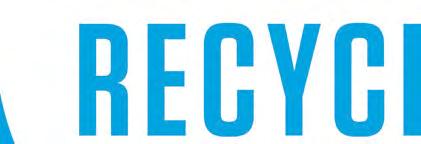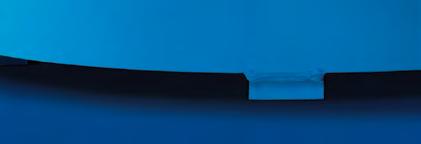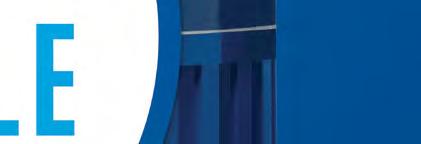

UMSU VP external ousted, now what?
Ramos Murphy’s removal and what current execs don’t have to say about it
S
ince the removal of Jared Ramos Murphy from the position of UMS U vice president external affairs, it’s been all quiet on the UMSU front, save for a singular Instagram post on the matter. The verdict of their removal was reached following a special UMSU Board of Directors meeting on Nov. 7, the majority of which was held in closed session. News of the verdict was disseminated via a singular Instagram post on UMSU’s official account on Nov. 7, with comments turned off of the post.
Ramos Murphy’s removal follows UMSU’s judicial board and ad hoc committee’s inves-
tigation into claims he broke his NDA, which was signed as part of his position on UMSU’s executive committee. All discussion of the specific instances or evidence of Ramos Mur-
“I’ve never knowingly broken my NDA,” shared Ramos Murphy in a conversation with the Manitoban. “I was looking forward to completing my term and continu-
“I was looking forward to completing my term and continuing to work for students, but the board has determined that is not the direction they wanted to go”
— Jared Ramos Murphy, former UMSU vice president external affairs
phy’s NDA being allegedly broken was held during closed session or during the judicial board and ad hoc committee meetings.
ing to work for students, but the board has determined that is not the direction they wanted to go.”
A message Ramos Mur-
phy also expressed was one of caution. “Be very careful and selective of who you choose as your next vice president external. If it comes to a by-election, I say to vote with the ideals that you have in your heart.” He added, “Just know that sometimes internal pressures will get the best of everyone.”
UMSU’s Instagram post states that Prabhnoor Singh, UMSU president, will be taking over Ramos Murphy’s portfolio, which includes student advocacy in legislature along with transit advocacy. As of publication, Singh has yet to respond to the Manitoban’s request for comment.
Mauro Institute promotes peace and justice
Roy Albright Obah, staff
The Arthur V. Mauro institute for peace and justice at St. Paul’s College continues to uphold its mission of “advancing social justice, peace and inclusivity through outreach, learning and service.”
Over the years, the institute has hosted a series of lectures at the U of M and brought global leaders to engage the campus community. The two flagship events, the Sol Kanee Lecture Series and the Brown Bag Lecture Series have become defining platforms for dialogue on peace and justice.
History and background
Originally established as the Arthur V. Mauro Centre for Peace and Justice at St. Paul’s College and officially launched in 2004, the organization was renamed The Arthur V. Mauro Institute for Peace and Justice in the fall of 2019. It was founded through the vision of Arthur V. Mauro,
an alumnus of both St. Paul’s College and the U of M. Mauro envisioned the college, the university, and the city of Winnipeg as an ideal setting for research and engagement promoting peace and justice.
The Sol Kanee Lecture Series
Stanley Amaladas, the director of the institute, explained the purpose of the Sol Kanee Lecture Series “is triggered by and grounded in learning and service.”
He added guest speakers are chosen based on “the range of issues confronting peace and justice” largely and in-between. “So, we invite speakers related to both their specializations and to peace and justice,” he said.
He noted past Sol Kanee speakers have included distinguished figures such as His Royal Highness Prince El Hassan bin Talal of the Hashemite Kingdom of Jordan, Rabbi Michael Melchior, Chief Oren Lyons, Pumla Gobodo-
3
ice baby
Olympian figure skaters speak on queer inclusivity in the sport
laugh, local
Why you should be out listening to and supporting local bands
Madikizela, Lloyd Axworthy, Justice Murray Sinclair and Lt. Gen. Roméo Dallaire.
“This year, a deliberate and intentional decision was made to invite two speakers rather than one for the sake of demonstrating that promoting peace and justice involves the efforts of more than one.”
Reflecting on a recent lecture in October which focused on archaeology, Amaladas said, “These are stories of human construction, human destruction and human efforts to remember, understand and preserve cultural heritages.”
Storytelling and peace education
Earlier this year, the institute collaborated with the Winnipeg School Division for the relaunching of the Storytelling Festival this year, featuring Brazilian storyteller Antonio Rocha. Amaladas touched on the significance of storytelling in advancing peace education, stat-
ing, “Stories are such a critical element in our human lives [...] To ignore our stories is in fact to disavow our collective responsibility to listening and to enable conditions for feeling heard.”
The Brown Bag Lecture Series
The Brown Bag Lecture Series, according to Amaladas, is “intended to be a learning experience for both the presenters and audience.” He added, “The Brown Bag Lecture Series welcomes professors, practitioners, community leaders and graduate students dedicated to the pursuit of peace and justice, human rights and conflict resolution.”
Impact and outlook
The institute’s influence extends beyond its public lectures. Through an academic
Cont’d p. 4 / awards <
Women’s Centre hosts empowering conference
The U of M Women’s Centre hosted a free Women in Leadership conference in collaboration with the Racial Equity and Inclusion Alliance and UMSU in the John A. Russel Atrium on Nov. 15 and 16.
The goal of this event was to provide a low-cost opportunity for women to build meaningful connections with fellow student leaders and community members. The two-day event featured panel discussions, group activities and networking sessions.
The conference was also an avenue for attendees to learn about barriers faced by women in leadership — especially those with intersectional identities — as well as the importance of advocacy.
Janna Samson, Women’s Centre vice president of finance and operations, said, “We are just glad that a lot of people found interest and support in this event.” She mentioned her teammates wanted to go to a women’s conference in Toronto, but the high cost made it inaccessible to them, and so they wanted to ensure cost would not be a barrier for their own conference.
She added, “My favourite part, 100 per cent, is the chances we get to have discussions on different topics.” Samson explained how discussions about allyship were insightful and the conference provided a space for attendees to challenge their preexisting ideas and beliefs.
Leata Goulet, the UMSU women’s representative, spoke on the aim of the event. “We wanted to be able to bring our community together to focus on women in leadership,” she said. Goulet emphasized the importance of “building community and connecting with people
Cont’d p. 5 / [you] <
Bisons men’s basketball win home opener against Saskatchewan Huskies Sports 17 Swish!
Mikaela Warkentin, staff
Arifah Gheesah, staff


109 HELEN GLASS BUILDING UNIVERSITY OF MANITOBA WINNIPEG, MB THEMANITOBAN.COM | 204. 474. 6535
GENERAL INQUIRIES: ME@THEMANITOBAN.COM
CIRCULATION INQUIRIES:
MISSING OR INCOMPLETE PAPER?
EMAIL: DISTRIBUTION@THEMANITOBAN.COM
EDITOR-IN-CHIEF Mikaela Warkentin editor@themanitoban.com
BUSINESS MANAGER Alice Teufack accounts@themanitoban.com
BUSINESS SUPPORT MANAGER Joshua Herold ads@themanitoban.com
EDITORIAL
MANAGING EDITOR Peace Ifeanyi me@themanitoban.com
COPY EDITOR Eden Quiring copy@themanitoban.com
COPY ASSOCIATE Mursal Ghiyasi
NEWS EDITOR Roy Albright Obah news@themanitoban.com
RESEARCH & TECHNOLOGY EDITOR Mansura Meghla research@themanitoban.com
COMMENT EDITOR Quinn Mayhew comment@themanitoban.com
ARTS & CULTURE EDITOR Boris Tsun Hang Leung arts@themanitoban.com
SPORTS EDITOR Abdul-Jalilu Ahmed sports@themanitoban.com
DESIGN
DESIGN EDITOR Deveney Jarrow design@themanitoban.com
DESIGN ASSOCIATE Patricia Sanque
GRAPHICS EDITOR Emma Gillich graphics@themanitoban.com
GRAPHICS ASSOCIATE Teegan Gillich
AUDIO AND VIDEO
AUDIO EDITOR Max Reid audio@themanitoban.com
PHOTO EDITOR Mike Thiessen photo@themanitoban.com
PHOTO ASSOCIATE Ebunoluwa Akinbo
VIDEO EDITOR Zulkifl Rafah video@themanitoban.com
DIGITAL MEDIA EDITOR Faisal Rahman social@themanitoban.com
SOCIAL MEDIA ASSOCIATE Paula Robles Andia
REPORTERS
NEWS Arifah Gheesah
NEWS Nafisa Al Lilo
RESEARCH & TECHNOLOGY Nawal Semir
COMMENT Thandeka Katsika
COMMENT Kyra Campbell
ARTS & CULTURE Carrington Dong
ARTS & CULTURE Jordan Anglin
SPORTS Faiyaz Chowdhury
SPORTS Israel Abejoye
VOLUNTEERS
VOLUNTEERS
Sethulakshmi Kumbalathuparambil Sajeev
interested in volunteering?
email me@themanitoban.com today!
The Manitoban is the official student newspaper of the University of Manitoba. It is published monthly during the summer and each week of regular classes during the academic year by the Manitoban Newspaper Publications Corporation.
The Manitoban is an independent and democratic student organization, open to participation from all students. It exists to serve its readers as students and citizens.
The Manitoban is a member of the Canadian University Press, and our journalistic standards can be found on the Manitoban’s website.
The newspaper’s primary mandate is to report fairly and objectively on issues and events of importance and interest to the students of the University of Manitoba, to provide an open forum for the free expression and exchange of opinions and ideas and to stimulate meaningful debate on issues that affect or would otherwise be of interest to the student body and/ or society in general. The Manitoban serves as a training ground for students interested in any aspect of journalism.
Students and other interested parties are invited to contribute to any section of the newspaper. Please contact the appropriate editor for submission guidelines.
The Manitoban reserves the right to edit all submissions and will not publish any material deemed by its Editorial Board to be discriminatory, racist, sexist, homophobic or transphobic, ableist or libellous.
Opinions expressed in letters and articles are solely those of the authors. Editorials in the Manitoban are signed and represent the opinions of the writer(s), not necessarily those of the Manitoban staff, Editorial Board or the publisher.
A “volunteer staff” member is defined as a person who has had three volunteer articles, photographs or pieces of art of reasonable length and/ or substance published in the current publishing year of the Manitoban
Any individual who qualifies as a volunteer staff member must be voted in by a majority vote at a Manitoban editorial board meeting. Elected representatives and non-students may be excluded from holding votes as volunteer staff members in accordance with the Manitoban Constitution.
All contents are ©2025 and may not be reprinted without the express written permission of the Editor-in-Chief.

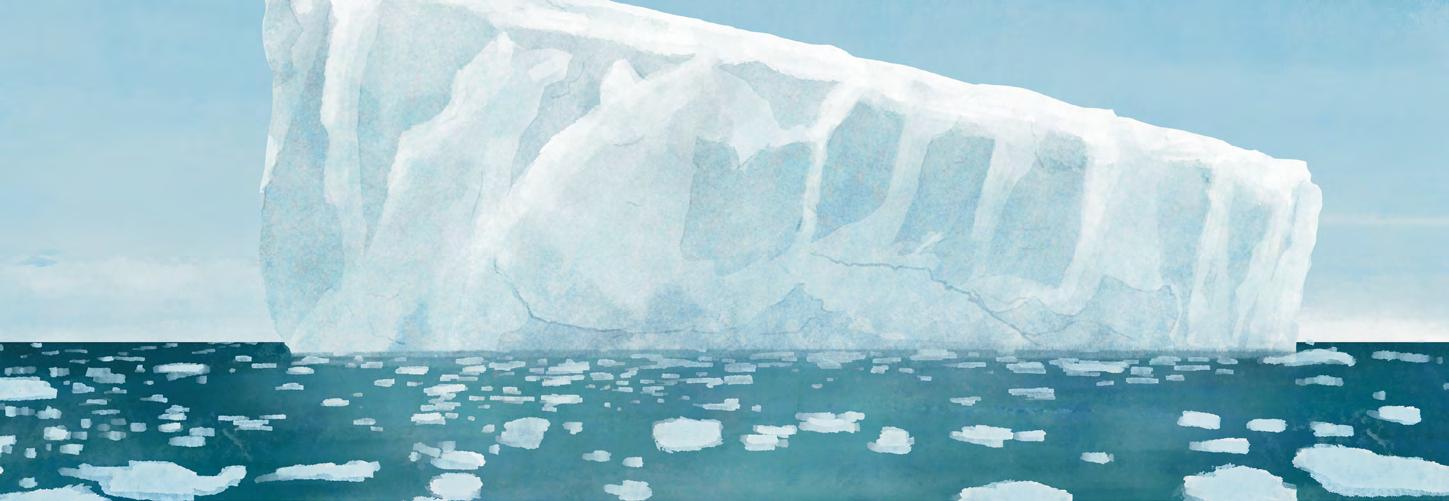




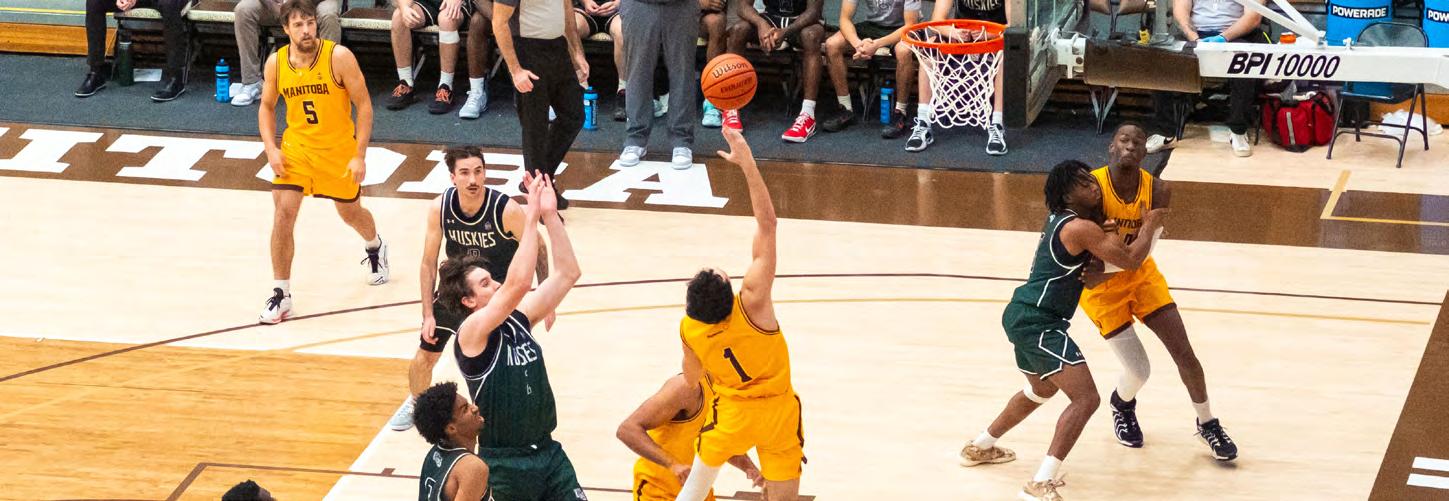
REIA and ASBC host thrift market
Pre-loved clothing and campus initiatives meet in Arts Lounge
Arifah Gheesah, staff
The Arts Lounge became a centre for activity from Nov. 3-5 as the Racial Equity and Inclusion Alliance (REIA) and the Arts Student Body Council (ASBC) hosted a thrift market for students. The event featured a wide range of pre-loved items from clothing to jewelry ranging $5 to $25, as well as refreshments such as pizza, coffee and bubble tea.
Students were encouraged to donate items with the opportunity to earn money back. Some proceeds from the event’s sales went toward student initiatives and programs organized by ASBC and REIA, including scholarships, health and wellness initiatives and other campus-focused projects.
Safron Blais, ASBC women’s representative, spoke on the event. “People seem like they enjoy the break from school to look at clothing pieces.” Blais also mentioned she purchased a cardigan from the market and highlighted the ways this event is helpful for students. “It’s nice to provide opportunities for myself and other students to have access to affordable clothing, especially with
the increase of fast fashion and the prices of clothing — and everything in general — going up,” she said.
The thrift market is not a new initiative. REIA and ASBC first hosted a similar event in spring 2025 and are already looking forward to hosting another market in the winter term.
Ysabelle Tankeko, a student attendee, said she really enjoyed the event and shared her thoughts. “I think thrifting is really important, especially [in a time of] a lot of fast fashion. Sometimes clothes are super expensive these days, as well.” Tankeko added that events like these make shopping both accessible and enjoyable. Beyond affordability, students appreciated knowing that their purchases were contributing to meaningful campus initiatives.
Student volunteers from both REIA and ASBC played a crucial role in organizing the event, sorting donations, arranging displays and making the market a welcoming space for all attendees, all while juggling shifts between their classes.

Sport activism on ice
Olympians discuss queer inclusion and gender in figure skating on U of M campus
Roy Albright Obah, staff
Olympians Gabriella Papadakis and Kaitlyn Weaver spoke on sport activism and social justice in figure skating at the U of M on Nov. 4 in Room 220 of the Active Living Centre.
The discussion, hosted by Tina Chen, vice-provost equity, and Douglas Brown, dean of the faculty of kinesiology and recreation management, explored how gender, queer identities and inclusive leadership are reshaping the world of figure skating.
Opening the event, Chen reflected on how the history of skating can be examined through the concept of “immanent critique,” which holds a discipline accountable to its ideals. She emphasized that sports cannot be separated from the bodies and identities that bring them to life, and that these conversations are essential to understanding how gender and history shape skating today.
Weaver shared her journey
of coming out as a queer athlete, discussing the challenges she faced with homophobia in the sport and the fear of losing her career. She described how joining Skate Canada’s Equity, Diversity and Inclusion Committee helped her recognize the power of using her voice to advocate for change. Through mentorship from Chen, she learned how empathy and open dialogue can foster understanding within communities. This experience inspired her to become a leading advocate for social justice in figure skating.
Papadakis spoke about navigating partnership dynamics and gendered expectations throughout her career and how these experiences motivated her to envision a skating culture that prioritizes safety, inclusion and learning. She also shared her ongoing efforts to make figure skating a space where young athletes can thrive without fear of judgment or exclusion.
The conversation focused

on recent policy changes regarding gender definitions in pairs and dance teams. At Skate Canada, a proposal to allow any gender combination in pairs and dance teams was approved unanimously by the board, expanding opportunities for skaters of all gender identities. This change builds on the work of Weaver, who also serves on the International Skating Union (ISU) Ice Dance Technical Committee. The speakers noted that while Canada has embraced
more inclusive practices, the ISU has been slower to adopt such changes.
The conversation concluded with Chen mentioning Papadakis’ upcoming book project and a discussion on how storytelling in figure skating can move beyond traditional romantic narratives to embrace more diverse expressions of artistry and connection.
The event is part of an ongoing collaboration between Chen, Papadakis,
Weaver, Noam Gonick and David Churchill. They are developing a research project that examines how figure skating can reimagine traditional gender roles and artistic boundaries within the sport.
As part of the event, Papadakis and Weaver joined the Queer Community Skate on Nov. 6 at the Wayne Fleming Arena, which brought together students, staff and faculty for an inclusive community skating session.
PHOTO BY ARIFAH GHEESAH / STAFF
PHOTO BY EBUNOLUWA AKINBO / STAFF

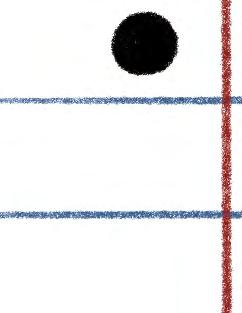
21 years of advancing learning, service and dialogue for a better world
< Cont’d from front page
awards program, it provides bursaries and fellowships that directly support students in the peace and conflict studies graduate programs, investing in the next generation of peacebuilders.
“My experience is that the impacts are soft and yet hard enough to [feel them move people] to purposeful action,”
JOIN
all will feel the need to act on behalf of peace and justice.”
Final 2025 Brown Bag Lecture
The 2025 Brown Bag Lecture Series will conclude with Somia Sadiq, peacebuilder, storyteller and founder of Narratives Inc. Her lecture will explore how metaphors,
“To ignore our stories is in fact to disavow our collective responsibility to listening and to enable conditions for feeling heard”
— Stanley Amaladas, director of the Arthur V. Mauro institute for peace and justice
he included.
He emphasized that the lectures reflect the institute’s mission. “We take our work in reaching out and partnering with our community stakeholders and speakers seriously […] This is how we serve our communities.”
Looking ahead, Amaladas expressed optimism for the future of the lecture series, hoping they “continue the grounds for understanding and […] conditions where
ancestral memory and sensory detail can bridge divides and open new pathways for dialogue.
The lecture will take place on Nov. 27. Faculty, students, staff and the public can register to attend in person at Room 255, St. Paul’s College, or via Zoom at umanitoba.ca/ st-pauls-college/mauro-institute-peace-justice/brownbag-lecture-series.
Are you ready to help shape the future of Manitoba’s largest credit union? We’re seeking passionate, forward-thinking individuals to join our Board of Directors.
We welcome candidates from diverse backgrounds, cultures, identities, and regions to ensure our Board reflects the communities we serve. Ideal applicants bring a blend of professional expertise and lived experience, with strengths in one or more of the following areas:
• IT, and digital governance
• Environmental, Social and Governance (ESG)
• Strategic planning and executive leadership
• Human Resources leadership
• Business acumen
WHY SERVE ON OUR BOARD?
Influence the strategic direction of a leading financial institution
Champion initiatives that benefit members and communities across Manitoba
Receive compensation for this paid governance role
LEARN MORE AT

A celebration of Filipino culture at the CMHR
Filipino vendors, students and volunteers gather for the Kwento’t Kulay celebration
Nafisa Al Lilo, staff
T
he Canadian Museum for Human Rights hosted Kwento’t Kulay: Stories and Colors, a one-day event on Nov. 9 organized by the Philippine Historical Society of Canada, Inc. (PHSCI). The event focused on Filipino culture, stories and artistic expression.
Nico Bryle Alfafara, PHSCI co-founder, provided insight about the event. “It’s an art session while at the same time a vendor market session, wherein we come together to gather the Filipino community.”
wanted it to be more personal in terms of identity,” he said.
Part of the event was a Filipino-Style market (tiangge.)
This served as a space for patronage and support of small Filipino businesses.
Axel Alegre participated in the event for the first time as a vendor. “I want to showcase my products […] I also want to highlight my arts and crafts, which I sell,” she said. “Being a Filipino in this Filipino event,
and, at the same time, be with my people.”
Santos also encouraged non-Filipino students to participate in Filipino events. “If you want to learn about Filipino culture […] you’re always welcome,” she said. “We’re a very welcoming community.”
Members of the U of M Filipino Students’ Association (FSA) were also involved with the event. Nathaniel Casiano, FSA co-president, shared his thoughts on the gathering.
“It’s important to be in spaces that make me intertwine with my culture and, at the same time, be with my people”
— Adaleia Santos, volunteer at Kwento’t Kulay
The event included three sessions in which attendees were taught something about the Philippines. The first session was about Baybayin, which is an ancestral written language in the Philippines. The second session was about volunteerism and stone art. The third, Alfafara said was “about cultivation and Filipino history and heritage.”
Alfafara explained the event happens annually, with each year focusing on a different theme. “This year, we
it’s something I want to [bring] in as a creative artist.”
The event was also an opportunity for people to engage with their cultural backgrounds. Adaleia Santos, a volunteer from the youth activist group Anakbayan, said she joined the event to learn more about her heritage.
“I wanted to get in touch with my Filipino culture and history,” Santos said. “It’s important to be in spaces that make me intertwine with my culture
“Part of this experience is really exploring Filipino identity, [and] aspects that may not be as prominent,” he said. “Filipino culture is not just jeepneys or Jollibee, it’s so much deeper than that.”
Danritch Balute, FSA co-president, added that the event highlights the diversity within the Filipino community in Canada. “You will find Filipinos that immigrated here and also Filipinos that were born here in Canada. That makes us interesting [because we] will have a different perspective,” Balute said.

Casiano and Balute noted the event also raised awareness about natural disasters in the Philippines. “[The Philippines is] in a place where there’s a lot of typhoons, a lot of natural disasters, including earthquakes,” Casiano said. “There was an earthquake that happened just last month, but currently there is
Campus leadership conference brings women together at U of M
< Cont’d from front page
[you] do not normally get the chance to connect with.”
The conference included sessions focused on topics such as communication, mental health, allyship and the history of women’s oppression. These sessions were led by collaborating clubs and organizations, including Manitoba Laadliyan, the Indigenous Student Centre, the Council of Women Winnipeg, the Provin-
cial Council of Women Manitoba and the National Council of Women of Canada.
A panel discussion was held where speakers shared their
struggles. The panel featured Carolyn Wang, Ute Kothe and Johise Namwira.
“We are just glad that a lot of people found [...] interest and support in this event”
— Janna Samson, Women’s Centre vice president of finance and operations
experiences as women leaders, the challenges they have faced, issues related to intersectionality and their advice on how to overcome these
The event closed with a craft-making session where attendees were able to network. The organizers expressed they look forward to hosting more events like this where women can come together and connect, while also continuing to expand the services they offer to students.
another typhoon.” Balute added, “Approximately, we get 20 typhoons yearly on average, and recently, with climate change, it’s been much worse. The storms are getting stronger,” Balute stated. “One of the many reasons they are organizing this event is to send help back home.”
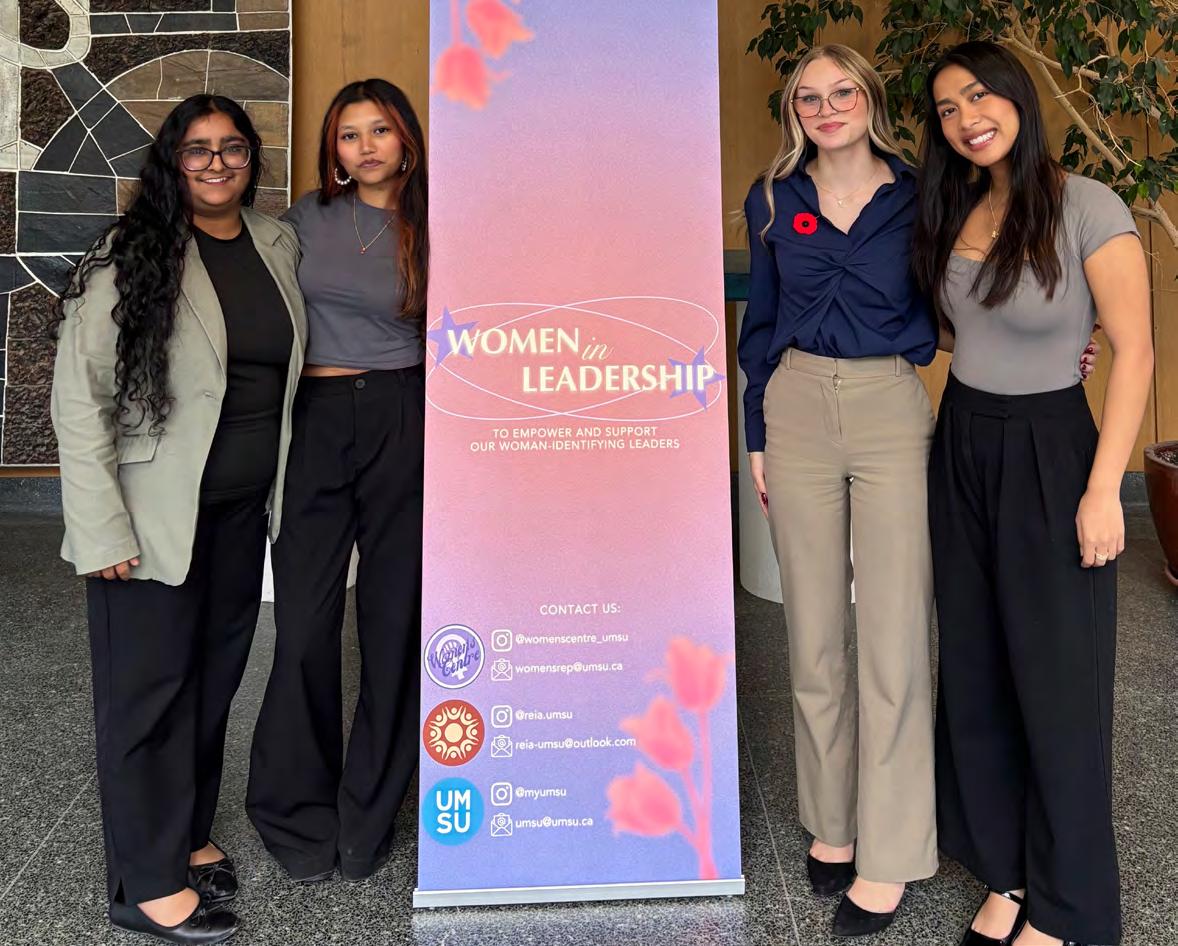

PHOTO BY NAFISA AL LILO / STAFF
PHOTO BY ARIFAH GHEESAH / STAFF
Renewing human rights in a divided world
Shayna Plaut weighs in on Alex Neve’s visit and the future of human rights
Nafisa Al Lilo, staff
T
he Canadian Museum for Human Rights (CMHR) hosted an event where Alex Neve, a renowned human rights advocate, spoke about broken promises and the challenges facing universal human rights in a divided world. The event was named after Neve’s book, Universal: Renewing Human Rights in a Fractured World
The event began with Neve presenting a lecture that covered the five chapters of his novel. Throughout, Neve shared stories from his decades of human rights advocacy. One was centred on Maher Arar and his wife Monia Mazigh, a Syrian-Canadian couple whom Neve advocated for in one of his cases. Arar was detained in the U.S. and deported to Syria, where he was tortured and imprisoned. Mazigh, alongside Amnesty International, played a key role in his release.
Neve used this case to discuss various issues with universal human rights, emphasizing how essential it is to humanize rights by recognizing the real individuals and families behind the violations.
In one of his presentations, Neve called people to “put human rights first, embrace universality and commit to equality, protect human rights defenders and the right to protest, ensure justice, be expansive and believe in and champion human rights,” emphasizing his vision for renewing human rights in a divided world.
The event held a question-and-answer session that allowed the audience to connect with Neve. The event concluded with a book signing, giving the audience a chance for one-on-one conversation with Neve.
Shayna Plaut, the CMHR’s director of research and exhibition development, mentioned the museum wanted to host the event because Neve is internationally recognized as a human rights advocate and an upholder of its principles here in Canada.
He was a strong fit for the event because they “thought that it would be a great convening [of] literary and thought-provoking approaches to international human rights, and to a large variety of audiences here at the museum.”
She said the event aimed to remind audiences of “the importance of holding onto international human rights principles and ideals, particularly in times right now where things are so divisive.” Plaut added, “Being able to hold on to the importance of all people needing to live a life of safety, security and dignity is even more important.”
Plaut encouraged universities to create “more spaces [for] conversation and thinking [about] human rights.”
She added, “It’s okay if we don’t all agree. We can learn from […] each other’s experiences […] and we can still walk away stronger in our understanding of human rights.”
“We need to make sure
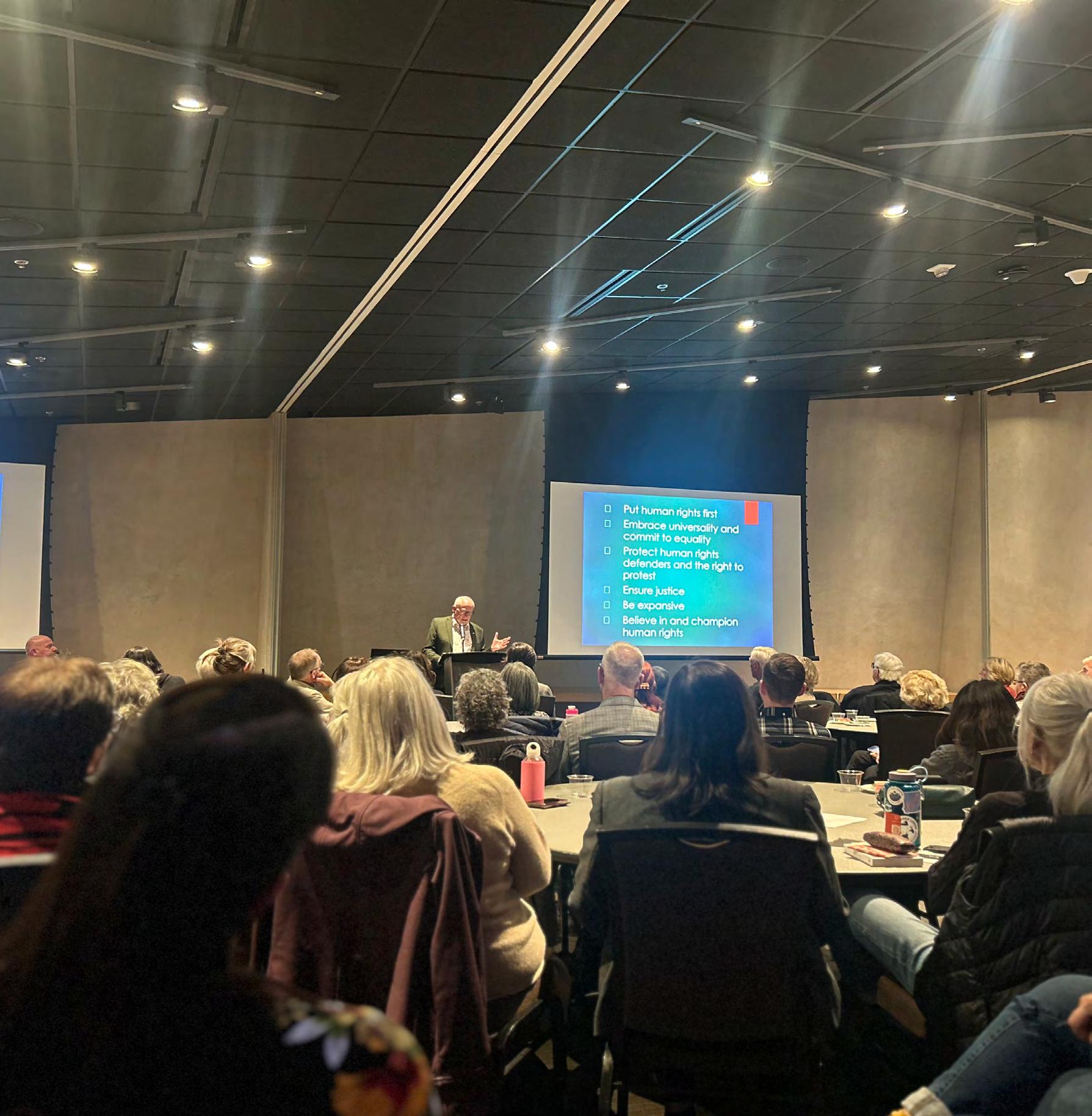
classrooms are a place for learning and conversations. Classrooms need to be able to hold divergent opinions,” said Plaut. According to her, it is also the responsibility of students to learn and hold “respectful space for each
other’s divergent opinions, and to really help lift up rather than tear [each other] down.”
Plaut added, “What’s really important is to remember that we can focus so much on human rights violations, but what’s important
is to also think about human rights possibilities, and I feel that students often have the space and the creativity to think about what’s possible as opposed to accepting what is.”

PHOTO BY NAFISA AL LILO/ STAFF

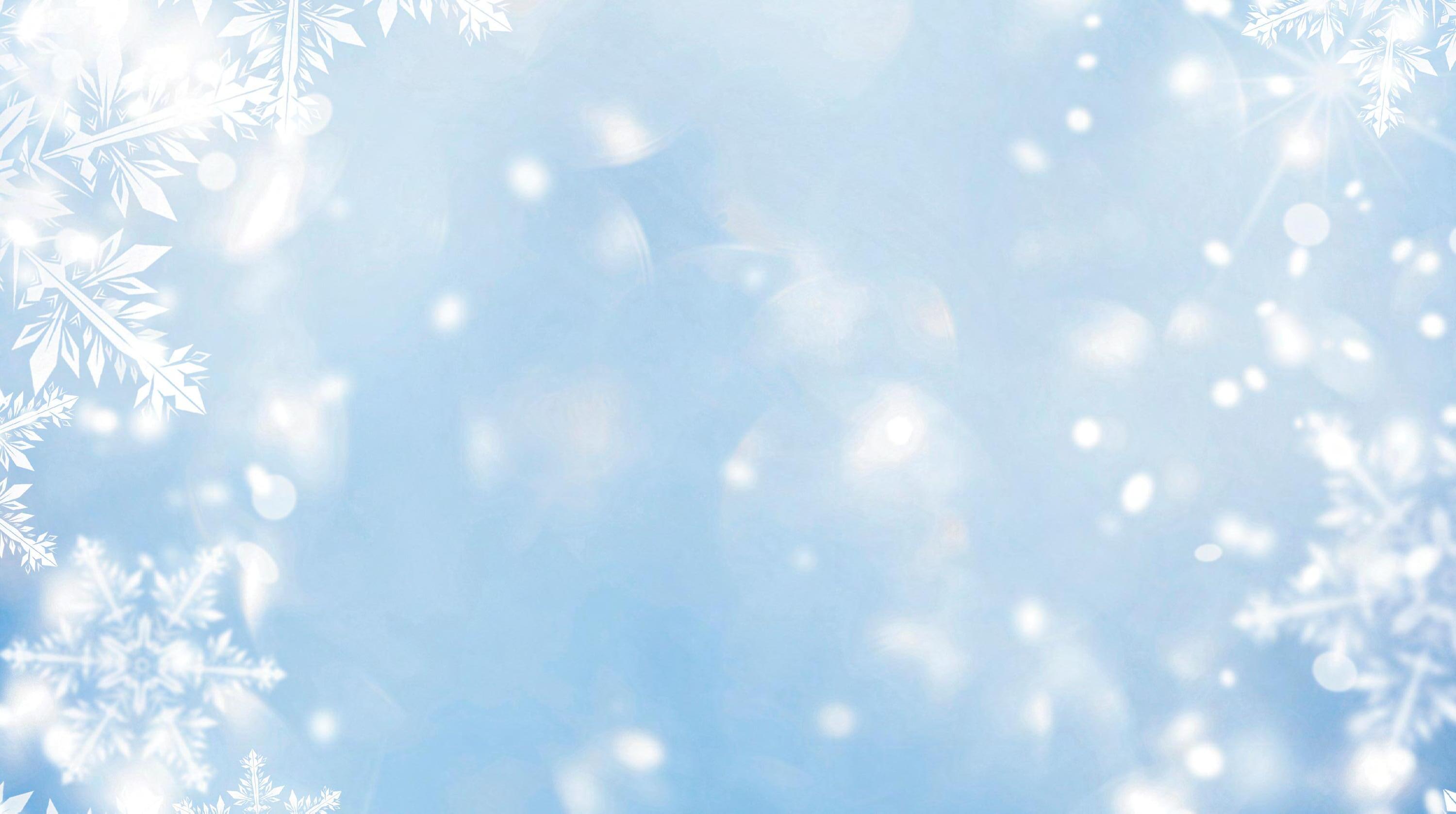
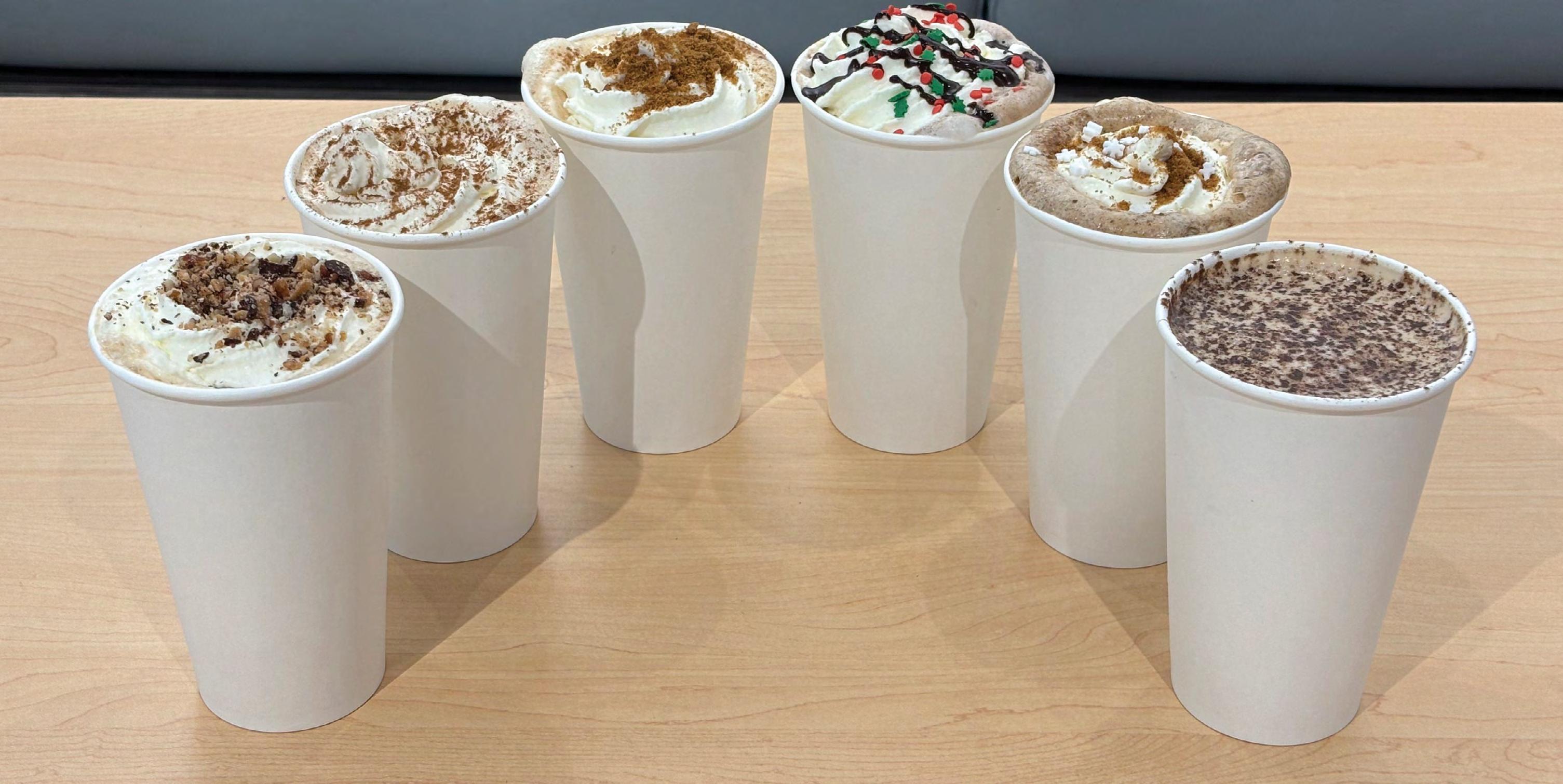
Research & Technology
U of M scientist reveals dangers of a warming Arctic
Climate scientist is using satellites and field data to track the melting edge
Mansura Akter Meghla, staff
Julienne Stroeve has spent much of her career studying one of the planet’s most rapidly changing regions — the Arctic. As a Canada 150 Research Excellence Chairholder at the U of M, she leads research that combines satellite observations and fieldwork to better understand how snow and sea ice are transforming in a warming climate.
“I study Arctic climate change, mostly focused on using satellite data to document changes in the snow and ice cover,” Stroeve explained. “I’m interested in what the cascading impacts of losing the summer sea ice will have both within and beyond the Arctic region, with a focus on climate, marine ecosystems and human systems.”
Her work is part of a growing global effort to monitor the Arctic’s shifting conditions. These changes influence not only northern communities and ecosystems but also global weather and ocean patterns. As the Arctic continues to warm nearly four times faster than the rest of the planet, scientists like Stroeve are racing to understand what an ice-free summer ocean could mean for the climate system.
Stroeve’s path to Arctic research began with a single university class. “I took a class from a professor who did research there and I was blown away by the beauty of the area seen in his photographs,” she said. “At the time, it seemed quite exotic to study this remote region of the world.”
Now, decades later, her work spans both poles. Recently, Stroeve has been developing systems to improve how satellites measure snow depth and sea ice thickness — two critical indicators of Arctic health. “We developed an in situ–based system that we’ve taken to the Arctic and Ant-

arctic,” she said, referring to equipment designed to collect and analyze data directly on site rather than relying solely on satellite measurements. “It’s been revealing that traditional assumptions do not hold, and that we need to rethink how we use satellite data for the most accurate representations of ice and snow thickness.”
These findings could reshape how climate scientists interpret satellite information. Radar altimeters are used to measure the height of sea ice and snow cover and depend on assumptions about how radar waves interact with
different layers of snow. Stroeve’s research showed these assumptions often oversimplify complex natural processes, potentially leading to errors in large-scale ice thickness estimates. Her work also plays a role in improving climate models that scientists use to project future environmental change. Part of her work has been “seeing how well climate models can resolve the observed changes,” she said. “[It’s] led both to an increased understanding of the links between sea ice loss and greenhouse gases, but also [to estimates] of when we may expect to see
the first ice-free summers in the Arctic Ocean.”
Looking ahead, Stroeve and her team “are working on securing funding to [develop] novel buoy systems in the Arctic that [can] directly deploy from aircraft,” she said. Such systems would make it possible to collect real-time information, even in areas that are difficult to reach by ship.
Beyond the scientific implications, Stroeve hopes her work helps raise awareness of the Arctic’s importance. “Ideally, we want to understand the implications of continued sea ice loss, but mostly I would like the world to care
about the Arctic and realize how important it is to keep the ice there,” she said.
Stroeve’s research has already influenced international modeling centers. Her 2007 paper, “Arctic sea ice decline: Faster than forecast,” revealed that observed sea ice loss in the Arctic was occurring much more rapidly than projected by existing climate models. The study prompted many modeling groups to revisit and refine their methods to better capture the pace and complexity of observed changes in sea ice, according to Stroeve.

GRAPHIC BY TEEGAN GILLICH / STAFF
The importance of the local music scene in big cities
Go see your favourite local artist before they might just leave
Max Reid, staff
Music is an integral part of culture, in many cases even helping people define who they are, who they interact with and how they see themselves. Finding someone who has similar tastes in music, artists and bands always opens conversations about favourite songs and albums, if they have seen them live before or how long they have been listening to them. It’s a fast way to make friends and widen the growing cultural scene surrounding genres and bands. For many, the goal would be to see their favourite artists and bands live on a big stage just once. The songs sound louder than life — bright lights set a stage for the performance of a lifetime.
In some cases, however, it seems like those favourite bands and artists skip cities on tours. It’s happened plenty of times to me, making me resort to travelling or just hoping I can catch them next time and having to miss out on part of a tour. Some people’s favourite bands have even broken up or stated they aren’t going to tour anymore, leaving a desire to see a much-anticipated concert sadly unfulfilled.
That doesn’t mean it is the end of that adventure to hear your favourite songs being played live. Every big city will have the people’s favourite strip of bars and venues, setting up a vibrant night-
life almost always accompanied by live bands playing from these hot spots. Local bands and artists flock to local venues to play songs, whether they are cover bands of popular music or artists trying to carve their own original music into the scene,
providing a backing soundtrack for the night. These gigs bring people to experience a lively time, some -

times bringing fans of these local bands with them or fans of the genre looking for their next favourite song. These smaller venues allow for likeminded people to mingle and meet, and if it’s a cover band, talk about why they like the songs being covered so much.
Some places will even hold small festivals like the Real Love Summer Fest or Manitoba Metalfest, giving people a chance to see artists that they might never have seen or even heard of before. I have been to both festivals, and the greatest part about them for me is the artists you may never see again — those from out of town or even out of the country on their own tour, stopping by in Winnipeg to perform for people they may never meet again. A literal blink-and-you’ll-miss-it moment. Some of the artists I have seen I still listen to but haven’t seen live since. Some bands may even break up before you even get a chance to see them a second time, making that one moment that you did entirely unique — an important moment for your own music culture, an impact on the genre itself or a moment that changes the culture of the festival itself. Many times, these bands that play are made up of people who have full-time jobs and are using music and the music scene to show who they truly are and showcase their creativity to people who appreciate the genre of music. It’s a break from day-to-day life and a time to let loose and use creativity that’s been bottled up. These bands even inspire others to take that leap and join the local scene, to make their own mark and expand on an everchanging culture. The importance of local bands and music scenes isn’t just about getting people in seats and buying drinks — it’s about leaving a mark and bringing that feeling of a big stage concert to a more personal level, leaving you wanting more.

GRAPHIC BY EMMA GILLICH / STAFF
Leave your gargoyle boyfriend at home
Some men are better left on the couch than brought to the party
Quinn Mayhew, staff
As I go through life, it becomes more apparent to me how many men think they’re entitled to not only exerting power over female agency but also commenting on women’s looks and appearances.
Microaggressions from men are a big thing that I think a lot of women experience on a day-to-day basis, so much so that we often tune them out at the expense of our own feelings and emotions.
Throughout high school and some of university, I was afraid to confront these microaggressions, especially coming from men, commenting on my writing, my appearance, my outfit choice and demeanour, with men often calling me “off-putting” or “too loud.”
Most men, by nature, seem entitled to not only assert power over women but also to control them because society will allow this under the pretext “boys will be boys.”
This need for men to control not only the female body but also female agency can be seen in romantic relationships, birth control, abor-
tion, the workplace and academia. This need to control women comes from a deep-seated form of misogyny where men think they are entitled to take what they want, and I do not mean all men when I say this. I have met some lovely, kind, self-aware men who are nothing but rays of sunshine, but for every kind man I meet, there are another 10,000 whose egotistical entitlement bleeds through.
Misogyny does not only live in the shadows — it exists as a living breathing thing that openly parades in the light of day. It is comments from your male co-worker, your friend’s boyfriend who decides you’re the problem for calling out his disrespectful behaviour, it’s the pattern of group projects where suddenly you’re doing all the work in your male dominated group because “you just know how to do things best.”
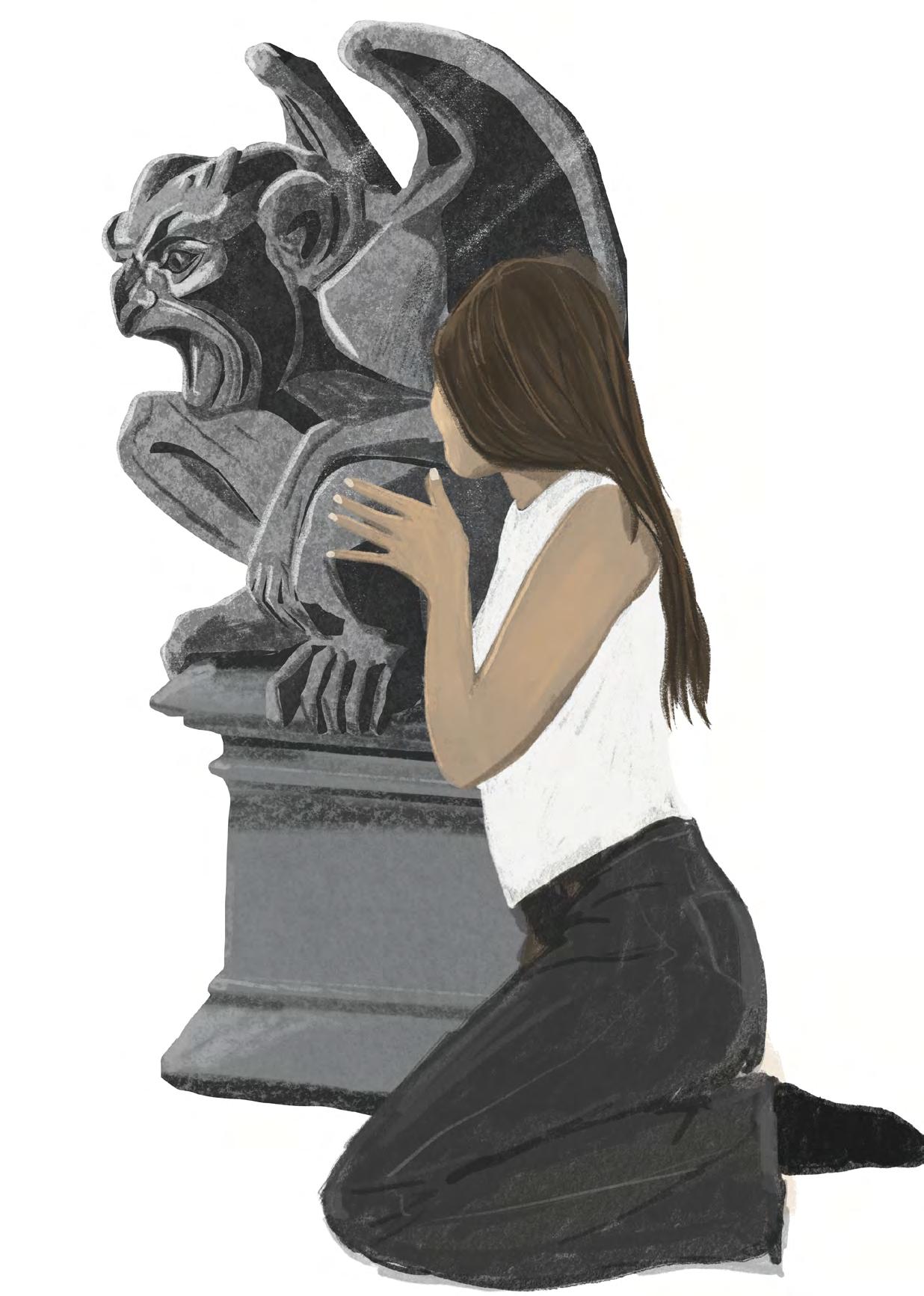
Take a stroll around campus
Immerse yourself in the
Sethulakshmi
Kumbalathuparambil
Sajeev, volunteer
As a neurodivergent, the bustle of one of the largest universities in the country can be overwhelming. The chatter, footsteps and doors opening and closing as students enter and exit all blend into a noisy blur that my brain doesn’t always know how to filter. Headphones became a necessity to keep the grubby hands of anxiety at bay. On a fateful day when my headphones gave up, I muttered a quiet “darn it,” stuffed them into my bag and braced myself for what I thought would be a long, anxious walk.
As I walked out of Robson Hall, I spotted a bunny, delicate and tiny, grazing in the grass. I stood there and watched this tiny furry friend enjoying an afternoon snack. A few feet away, an American red squirrel sat munching on an acorn, its tail fluffier and larger than its entire body. Before I could even look away, I saw movements — the dried leaves seemed to have come alive, my eyes strug-
Recently, I have adopted a no-nonsense approach to men, as if I woke up one day and decided enough was enough. I was no longer willing to play my part in the cycle of boosting men’s egos while compromising my own values.
Have you ever heard of the term “gargoyle boyfriend?”
Well, let me ask you, have you ever had a friend bring their evil boyfriend to every function and then he sits in the corner like a gargoyle and makes absolutely no effort to get to know you while making rude comments? Well, I have. These forms of men, for me, are not only extremely annoying but also feed the cycle of misogyny. Why on earth would you come to a gath-
nature that Fort Garry campus has to offer
gled to make sense of what was happening until I caught a glimpse of yellow and white, then an eye, then a beak — a white-throated sparrow. He foraged on the ground, his tiny buddies not far away, shuffling and chirping softly among the leaves.
Not to be dramatic, but in that moment, I felt so alive. My jaw loosened, my shoulders dropped, and my face felt lighter. I took a deep breath without even realizing it, as if my body had been waiting for permission to just exist. For once I wasn’t going anywhere. I was simply there.
The Fort Garry campus is full of life — a shared ecosystem, buzzing and breathing all around us. The Canada geese come in early spring and take full ownership of the campus grounds. You often hear them before you see them, their honks loud, distinct and occasionally a warning sign if you even dare to breathe near their nests. They’re a demographic of Canadians who don’t particularly care about the nation’s friendly and polite reputation.
By early summer, if you’re lucky and observant, you might spot a baby deer lying alone in the grass perfectly camouflaged, its white spots mimicking dappled sunlight hitting forest floor. Now, if you ever come across a fawn, the best thing to do is leave it be. It’s almost never abandoned. Mother deer often leave their babies hidden in tall grass or shrubs while they forage, trusting the camouflage to keep them safe. In time, those white spots will fade as the fawn grows stronger. By early fall, you’ll see them walking alongside their moms, taller, braver and fast enough to sprint away from danger.
If you’re a birder like me, strap on a pair of binoculars and take a slow stroll. You’ll be tattled on by chatty yellow warblers before you’ve even settled into your pace. Sooner or later, you will hear the cheerful song of an indigo bunting from a high perch. Look up and you will see the most brilliant shade of blue you have ever seen in your life.
If you didn’t already know, the U of M has its own birding
ering where you’re just going to sit in the corner pouting?
The recent Vogue article by Chanté Joseph titled “Is Having a Boyfriend Embarrassing Now?” has been heavily weighing on my mind. Is having a boyfriend embarrassing? I’d like to counter that and say not always.
Being in a relationship with a man isn’t always intrinsically embarrassing — it’s the self-abandonment that is embarrassing. In this era of self-love, authenticity and feminism, what is embarrassing is the knowledge that men are still disrespecting women publicly and privately, and women are still choosing to not only sign on to this but also defend these terrible men.
I’d like to end this article by saying, do not bring your gargoyle boyfriend to our hangouts — leave him at home. I’m sure he can manage. I do not want to see a Joseph at the function sulking in the corner, making disrespectful comments and then thinking they’re funny — they’re not, they’re misogynistic.

club called the UM Indigenous Birding Club, open to all students, staff and faculty who want to connect with nature through birding. The club hosts guided birdwatching walks during the summer months, offering a way to explore campus and learn about the many feathered residents that share our space. As the seasons shift, so do the cast of characters that make this place feel alive. The geese start heading south by late autumn. Now that they’ve
eaten enough to be ready for hibernation, the groundhogs are rounder. If you’re lucky, you might even catch a glimpse of the fox that occasionally stops by as fall gradually gives way to winter. So, if you ever find yourself needing a break from the buzz of academic life, step outside without your headphones. You might find a little calm in the company of a bunny, a squirrel or even a bunting calling from the trees.
GRAPHIC BY TEEGAN GILLICH / STAFF
GRAPHIC BY TEEGAN GILLICH / STAFF

Master

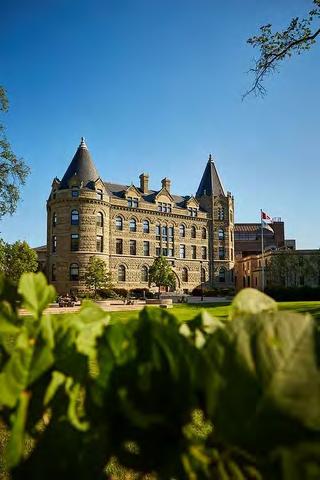
Ms. Rachel teaches that empathy is power
As compassion retreats, Ms. Rachel centres those whose stories most need hearing
Kyra Campbell, staff
U
nfortunately, in this current societal moment, it feels like showing empathy and caring for others simply on the basis of humanity is often perceived as “woke” or “radical.” The online backlash to public figures who express concern, especially on what are viewed as political issues, shows how much attitudes toward such actions have hardened. In this era, Ms. Rachel (Rachel Accurso), a YouTube personality and teacher adored by parents and children alike, demonstrates what it looks like when someone with privilege uses their platform for more than personal gain, even when they are harshly demonized for doing so.
For those unfamiliar, Ms. Rachel has built a massive following through her songs and educational videos for children. Her gentle encouragement and commitment to kindness have made her a household name. She has long championed inclusivity and early childhood development, helping families navigate the often overwhelming world of parenting and learning. Over the past year, she has expanded her advocacy efforts, which has brought her both support and criticism.
As the genocide in Gaza continues, attacks remain
ongoing. Schools, homes, hospitals and businesses have been flattened, and hundreds of thousands of people have been displaced. While many public figures have not spoken about the immense human toll, Ms. Rachel has used her online presence to call for empathy and highlight the suffering, especially among children in Gaza.
Her activism goes beyond reposting on Instagram or making the advocacy about herself. Instead, she elevates the voices of those most affected. She shares stories, experiences and resources from Palestinian families and children’s advocates, including the story of Rahaf, a young girl who had both legs amputated due to an Israeli airstrike. Ms. Rachel not only highlights Rahaf’s story but also does what she is best at, allowing Rahaf to simply be a child through singing and dancing.
It is telling that her advocacy, centred on compassion and care for children, has been met with accusations of being too political or too “woke.”
But in the face of criticism, Ms. Rachel has stayed true to her values. As she explained in an interview with Glamour, “My love and care for children doesn’t stop at my own children. It doesn’t stop at the children in our country. It
embraces every child of the world.”
I remember being asked on more than one occasion by people aware that I do pro-Palestinian advocacy if I was Palestinian. While it was never explicitly stated why they were asking, it was clear that if I was not, they wondered why I cared about the issue so much. The idea that people might go out of their way to help others on the basis of shared humanity, rather than something like nationality, seemed difficult for some to understand. I mention this not to centre myself, but to illustrate that, despite our increased technological connectivity, it can feel like people are more disconnected than ever when it comes to empathy and care for one another.
In her Instagram posts, Ms. Rachel has made clear that human rights are being treated like a joke by many, and she will not be silent or allow that to continue unchallenged. She stated plainly that “wanting kids to not be killed” should not be met with unfounded claims that she is being paid by Hamas to speak out about the atrocities unfolding for children in Gaza.
It is not new that any issue more often than not will be met with opposition. However, the growing and vocal
Girl’s girls vs. pick mes
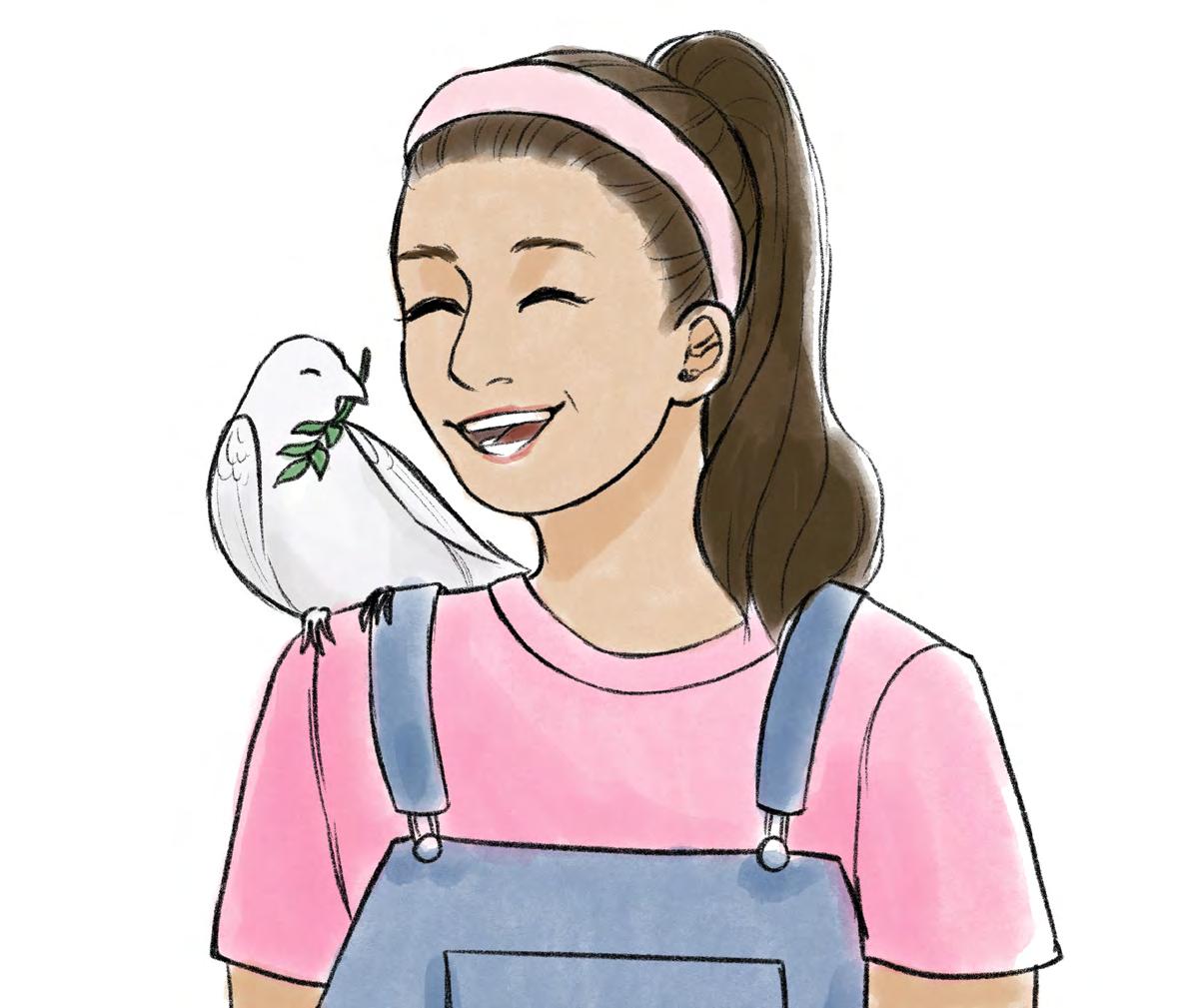
opposition to human rights is particularly dangerous. Whether it is Palestine, growing income inequality, climate change or any other current issue, complacency will solve nothing. The loudest voices in the world, like those trying to silence Ms. Rachel, only continue to win when we remain uneducated and disconnected from one another’s struggles.
While this can be heavy and disheartening to discuss, advocates like Ms. Rachel still have many supporters. She was recently recognized by Glamour as one of their 2025 Women of the Year at an event where she wore a dress
depicting the artwork of children from Gaza. About the drawings, Ms. Rachel said, “I’m carrying their stories in my heart. They all know about the dress, and they’re so excited.” Along with this recognition, she has the support of many everyday people, with 4.3 million followers on Instagram and an outpouring of encouragement online. Ms. Rachel is an example we should all strive to follow. While most of us may not have the same level of influence, her unwavering compassion should be replicated by people everywhere.
How labels that were meant to be feminist actually pit women against each other
Thandeka Katsika, staff
In recent years, social media has given rise to the terms “girl’s girl” and “pick me.”
The first describes a woman who is completely down for the girls — loyal, kind and always supportive of her fellow women. The latter describes a male-centered girl, one who brings other women down for the validation of men. At first glance, these terms seem harmless, beneficial even. They seem to simply describe two different personality types, but beneath the surface is a more troubling reality — these terms that were once meant to empower women are increasingly being weaponized against them.
Even though each term has a traditional meaning, now these terms seem to be tools to sow division among women. Today it seems like, in the social media space, women are criticized not by
their actions but by how other people interpret their actions.
For example, a “pick me” is no longer just someone who openly belittles other women for men’s sake. Based on my social media experience, she can be any woman who dresses differently, speaks differently or makes choices that others find inconvenient or unfamiliar. A woman who prefers hanging out with men might be dismissed as a “pick me,” even if she genuinely feels more comfortable in that environment.
Another woman might be called a “pick me” for expressing a personal preference that happens to align with traditional femininity like cooking, baking or wanting a stable heterosexual relationship. Suddenly, the label has little to do with calling out harmful behaviour and everything to do with dismissing women’s choices as illegitimate or male-influenced sim-
ply because they differ from people’s expectation.
The same distortion happens with the term “girl’s girl.” Instead of meaning a supportive, empathetic woman, it has become a label women are expected to wear. A girl’s girl must like the “correct” things, have the “correct” opinions and show unwavering solidarity with other women, even if those women are wrong, harmful or unkind. It seems like if a woman steps out of line she is stripped of her “girl’s girl” status and looked down upon.
This shift reveals something deeper — society has found yet another way to make women compete. The labels create an invisible checklist of what “good” womanhood looks like. It makes the already complex world of interactions between women even harder. These labels encourage judgment and criticism among women. Instead of asking why
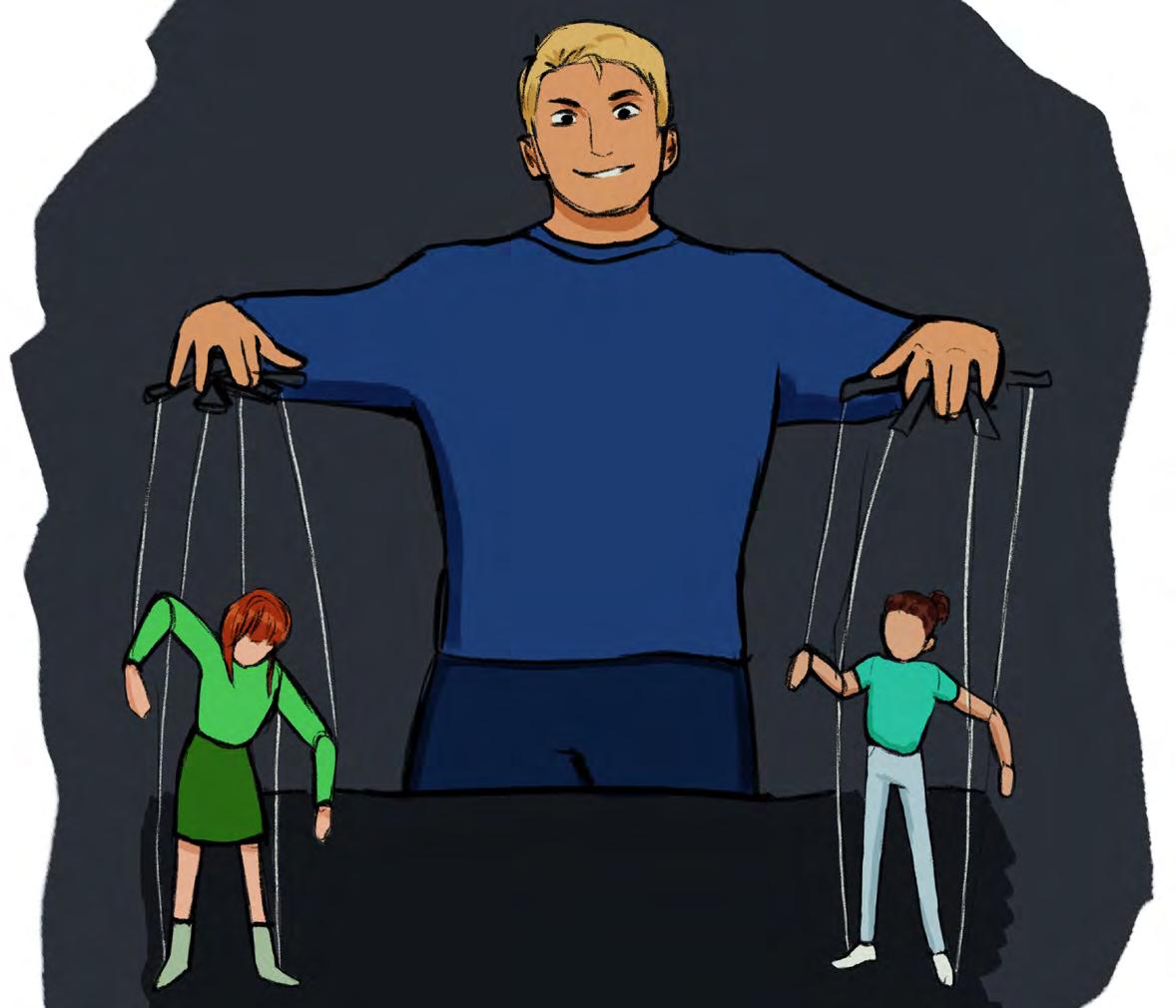
a woman acts a certain way, social media encourages us to immediately assign her a label that defines her worth.
Ultimately, women deserve the space to be complicated, imperfect and evolv-
ing without being categorized or condemned. Empowerment should bring women closer together, not give society another way to pull them apart.
GRAPHIC BY EMMA GILLICH / STAFF
GRAPHIC BY EMMA GILLICH / STAFF
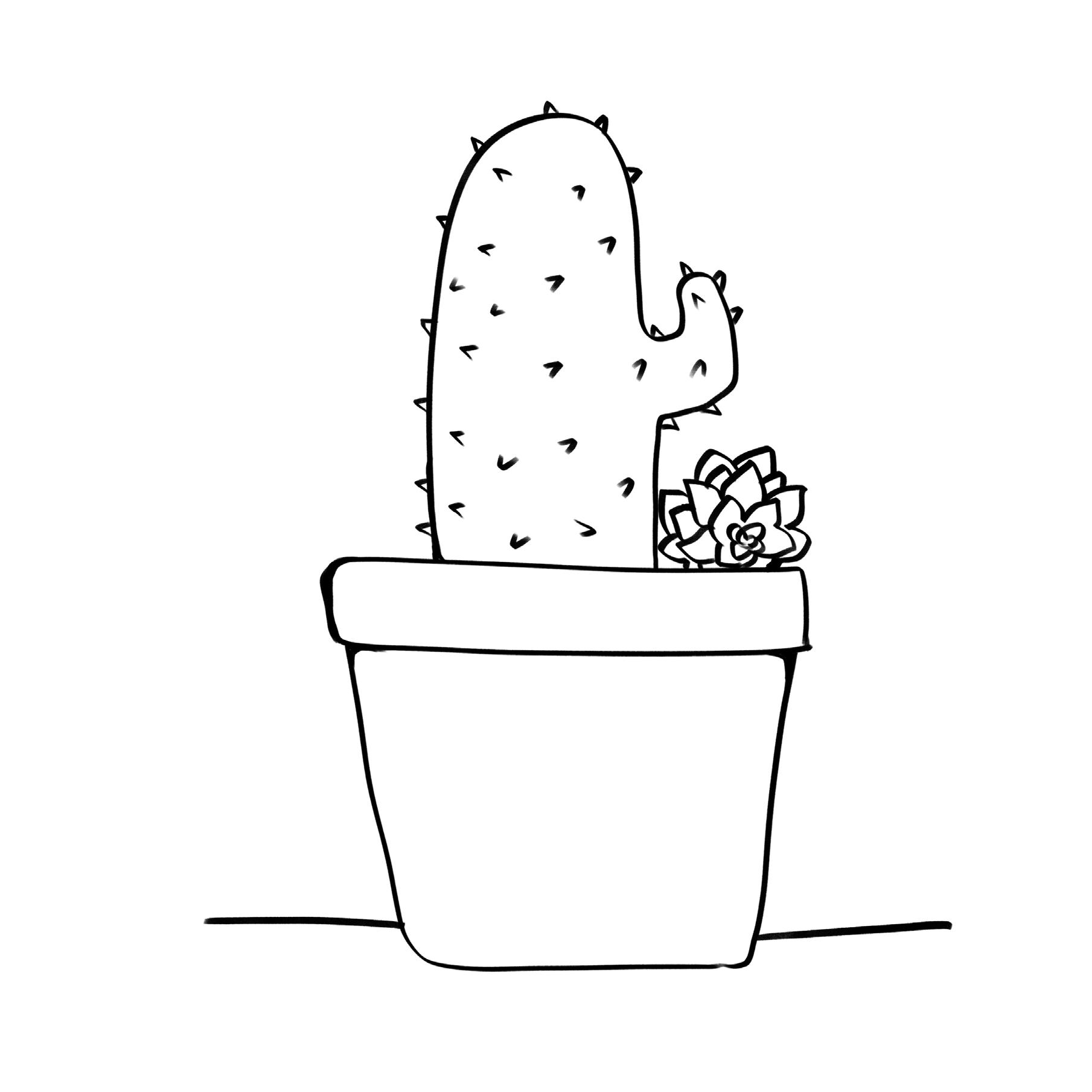

To complete Sudoku, fill the board by entering numbers 1 to 9 such that each row, column, and 3x3 box contains every number uniquely. In Straights, like Sudoku, no single number 1 to 9 can repeat in any row or column. But rows and columns are divided by black squares into compartments. Each compartment must form a “straight.” A straight is a set of numbers with no gaps but it can be in any order, eg [7,6,9,8]. Clues in black cells remove that number as an option in that row and column, and are not part of any straight. Glance at the solution to see how “straights” are formed.

Living Hour to return to Winnipeg
Local indie rock band promotes new album with concert
Jordan Anglin, staff
Local indie rock band
Living Hour has been spending this November playing shows across the continent to promote their fourth and latest album Internal Drone Infinity. The 2025 tour will conclude at The Park Theatre on Nov. 21.
The final show will mark their return home to Winnipeg before their West Coast tour in February with New York City band The Pains of Being Pure at Heart. Living Hour guitarist Gilad Carroll is excited to play surrounded by “friends and community and family that have been supportive of the band for a long time,” and feels proud of the local music scene.
“We’ve really been [finding fans] more than ever, and it’s just fun to look up when you’re playing and see people bobbing their head or dancing or rocking out. We felt a really positive response,” he said.
Carroll also commented on playing live. “We like when it sounds loud but not piercing,
and I think that our experience playing together as a band has allowed us to dial that in,” he said.
Internal Drone Infinity was released on Oct. 17, nearly two years after its initial recording at Collector Studio and No Fun Club. The album is a departure from the dreamy and ethereal characteristics they first become known for, and Carroll called it their “rockiest album yet.”
“It feels good to put out a record that’s louder and heavier and more upbeat for us,” added guitarist Adam Soloway. “The genre of shoegaze has been intertwined with other genres [recently and] that’s connecting with a younger audience.”
“The songwriting, I think, is the best we’ve done, just in terms of [...] a pop sensibility,” Carroll said. “I’m super proud of a lot of the lyrics that Sam [Sarty] put together for this album. [They] are really cool and interesting.”
Living Hour began experimenting with new ideas in
2022 after touring for their previous album. Both guitarists noted their communication feels natural after growing up and playing their instruments together for two decades. They recruited their friend Melina Duterte (also known as Jay Som) to help record and produce the album. Soloway remembered Duterte was good at encouraging the band to experiment, giving them lots of time and freedom. Their intuitive dynamic resulted in lots of “cool, unique moments” and “different tones that [they] wouldn’t have had otherwise.”
“We built the songs in the studio setting with [Duterte]. She was really great to work with, and it turned out better than we could have hoped,” Carroll complimented.
The guitarists are also co-founders of Real Love Winnipeg, an organization that promotes local indie music. “We’re extremely intertwined with the local [music] scene, and so we’re happy to be doing what we’re doing and thank-
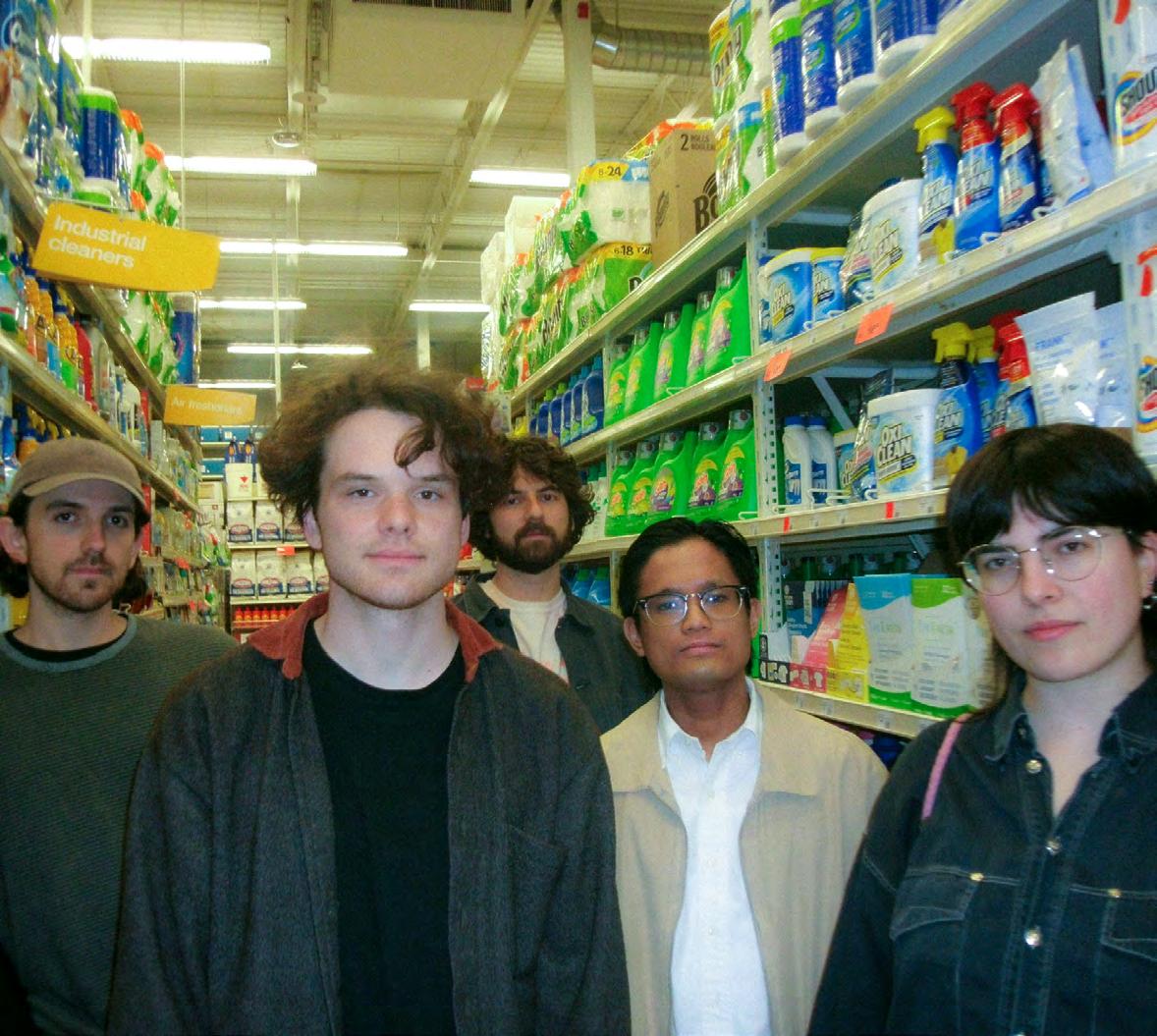
ful for all the support,” Carroll expressed.
“Getting to connect with musicians daily and see so much incredible music is amazing [...] It’s constantly energizing,” Soloway added. Together, they encourage bands Living Hour tours with
to come and play for Real Love. “We’re always singing Winnipeg’s praises,” he said.
For tickets and more information, visit livinghourband. com.
Stephen Adamopoulos releases single “There Is A Place”
Winnipeg singer-songwriter’s debut single focuses on themes of life and mindset
Carrington Dong, staff
Stephen Adamopoulos has loved music for most of his life, having grown up in a house where music was always playing. He decided to take up the guitar during the COVID-19 pandemic and honed his craft through jam sessions with friends.
“I started playing with some of my close friends. We started learning together […] and it just progressed from there,” he recalled.
—
“It’s
Adamopoulos starts his compositions with chord progressions, which he then finetunes and re-plays.
The topic of the song was not planned — it came about naturally as he worked on the melody. According to Adamopoulos, the lyrics focus on finding a better place in life.
ning on doing some recording and they had it all set up,” he recalled. “So, I just came over, and we just cranked it out […] It turned out so much better than I could have imagined in the beginning.”
a comparison [of] where your state of living is now to where it can be”
Stephen Adamopoulos, local singer-songwriter
Adamopoulos has begun to make his own music now, drawing inspiration from the 1990s rock scene in Seattle, which featured “heavier, grungier” sounds.
“Some of my favourite artists that my music takes inspiration from are Neil Young, John Frusciante of the Red Hot Chili Peppers and Kurt Cobain of Nirvana,” he said.
Adamopoulos has taken the next step in his career by releasing his debut single “There Is A Place” on Nov. 14.
“It’s a comparison [of] where your state of living is now to where it can be,” he explained. “[It is about] having an optimistic view about how you can live life. It’s almost like you’re dreaming of somewhere that’s better.”
The choice of “There Is A Place” as Adamopoulos’ debut single was simple — it was the first song he recorded during a jam session with Winnipeg rock band The Love Letters.
“They had rented some mics and had [them] in their house, and they were plan-
Through their connection, Adamopoulos had the opportunity to open for The Love Letters at a concert in June at Sidestage in South Osborne. The concert was his first time playing original songs with a backing band, which consisted of two close friends. He said the experience was very exciting. “[The Love Letters] had someone that was supposed to open [for them], and then they fell through. And then they were like [to me], ‘Would you want to do an acoustic set?’ And I said sure. And then I was like, ‘I’m not doing an acoustic set, I want to play with a band,’” he said.
Adamopoulos has more songs in the works, which he plans to record and release over the next several months. He hopes to do more live per-
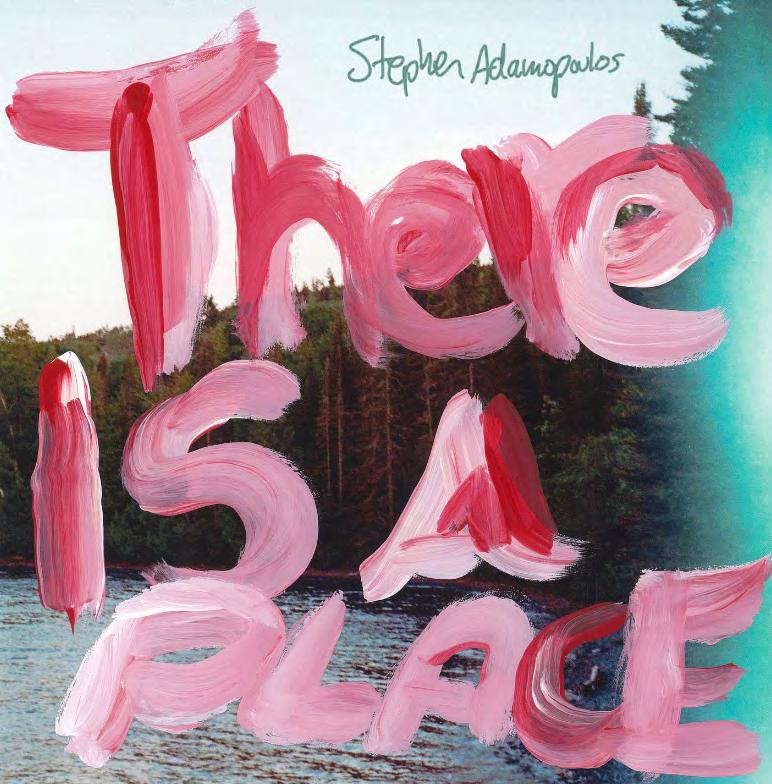
formances in the coming months as well.
“I want to get to the point where I can keep writing and making new songs,” he stated.
“And I really want to see what I can do with music and the songs that I can create and see how far I can take it.”
Stephen Adamopoulos’ debut single “There Is A Place” is available on all streaming platforms. For more information, follow Adamopoulos on Instagram @stephen_adamopoulos.
PHOTO PROVIDED BY RYAN STEEL
PHOTO PROVIDED BY STEPHEN ADAMOPOLOUS
Thompson author tells story of Kerrie Ann Brown
Kathleen Ricard publishes book on 1986 Manitoba cold case
Boris Tsun Hang Leung, staff
A group of teenagers were at a house party in Thompson, Manitoba on Oct. 16, 1986. What was supposed to be a fun night turned into a nightmare when 15-yearold Kerrie Ann Brown disappeared from the party. Two days later, Brown was found murdered in the outskirts of town with evidence of sexual assault. The case remains unsolved.
Born and raised in Thompson and now living in Estevan, Saskatchewan, Kathleen Ricard met Brown just that summer. The two bonded despite the short time they knew each other.
“We hung out, we had conversations, we talked, we were at parties together. We […] played car tag on the street. We did all this stuff together,” said Ricard when she described their friendship.
Last month, almost four
decades later, Ricard published The Deafening Sound of Sorrow to tell Brown’s story. Ricard explained she first started writing the book in her twenties, but hid it in a box in her closet after realizing the book had no ending since the perpetrator had not been caught.
In 2021, Ricard received a phone call from a childhood friend on the 35th anniversary of Brown’s murder urging her to finish the book. This time, Ricard explained, she wanted to focus on Brown’s life, not her murder or its perpetrators.
“I realized when I was reading that first draft, there has to be something more to this story than [her being] the coldest murder case in Manitoba history. It always goes back to those monsters, and I always call them monsters,” she said.
“I don’t know if her murder is ever going to be solved.
Instead of focusing my hatred on that and my anger on that, I just switched it up. Let’s focus on her and what she did in the short period of time that she was here.”
Writing The Deafening Sound of Sorrow was not an easy process for Ricard. In a blog post, she described her chapter on what happened that night as “the hardest thing [she has] ever written.”
“It’s brought back [the trauma] a little bit […] Maybe that was part of the thing of not wanting to go back to that box and opening that thing up, because I don’t think it made me heal. I think it brought back so many other things too, along with the good stuff,” she stated.
Brown was born in Ontario in 1971 before her family relocated to Thompson. Ricard described her as cautious, shy and lovable, not a risk-taker or someone who
would get into cars with strangers. Her murder was devastating and shocking to the community.
Despite the tragedy, the community came together to make the best out of the situation. The teenagers formed a youth group and talked to students about the importance of safety and communication. They also raised a $10,000 scholarship in Brown’s name, which is still in place. Now a mother, Ricard continues to advocate for teenagers’ safety.
“When my daughter was 15, she wanted to go to a party.
That brought [memories of] Kerrie back […] Here in Estevan, Saskatchewan, you partied in fields. No GPS at this time, no nothing, so I made everybody exchange numbers,” said Ricard.
“The real message within the book is that people need to look out for each other, and it’s a good message for teen-
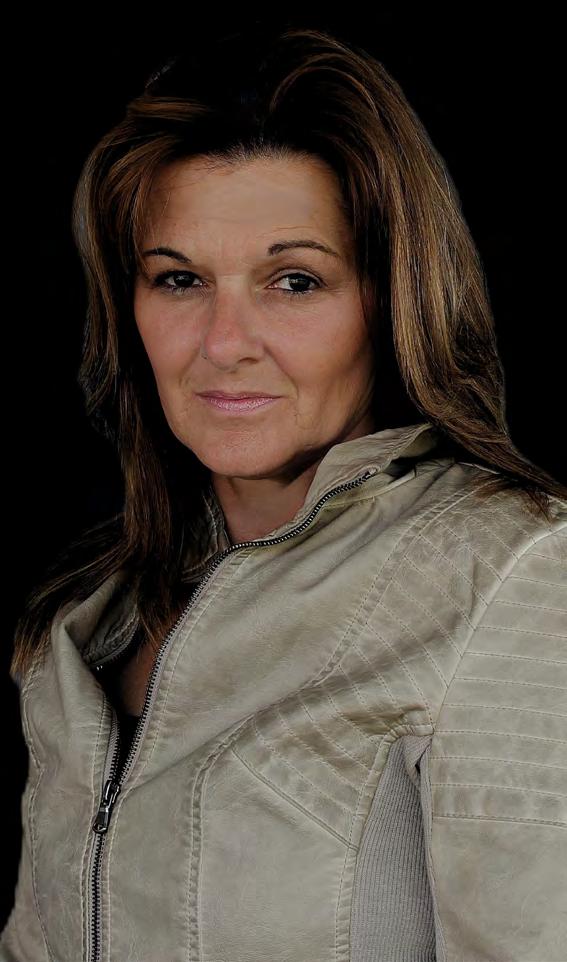
age girls and boys.”
The Deafening Sound of Sorrow can be purchased on Amazon. To learn more about Kathleen Ricard, visit kathleenricardauthor.ca.
WAG hosts show for local and northern crafters
Annual Crafted market returns to the Winnipeg Art Gallery
Jordan Anglin, staff
The Winnipeg Art Gallery hosted Crafted 2025 from Nov. 7 to 9 — a craft show and market including over 100 vendors and taking up nearly the entire gallery. All four floors were packed with crowds. The event was held in collaboration with arts organizations and governments from Manitoba, the Northwest Territories, Nunavut and the Inuit regions of Nunavik and Nunatsiavut.
There was a wide variety of crafts on display and for sale at the event. Artists Sandra Klowak, Jasmyn Douglas-Schmitz and Maureen Winnicki Lyons spoke about the experience of the event and their crafts. They are just three of the astonishing number of vendors featured at the gallery over the weekend.
Klowak makes jewelry from

hair, under the name Corporeal Curios. Hair work is a type of craft associated with Victorian sentimentality and mourning, though she said it dates back to the 1600s.
She makes a lot of mementos for clients with deceased pets, including one customer who went home after a visit to Crafted and returned with dog fur for Klowak to use in an on-the-spot commission. Many clients also ask her to make pieces from their family members’ hair for Mother’s Day gifts or to commemorate departed children.
“It’s such a meaningful experience for me to get to help these people in a time of intense grief,” she commented.
Klowak also taught hair work to U of M English professor Vanessa Warne, who now demonstrates the craft in some of her courses.
Douglas-Schmitz, also known as Strawberry Moon Creations, made the trip from Fort Smith, Northwest Territories to sell her beaded accessories at Crafted. She was one of several Indigenous artists from northern Canada to be invited to the event, including two others from her community.
“[Crafted] was such a great experience for all of us from the north,” she commented. “It was just really nice to have

those really heartwarming conversations and make different connections. It’s definitely something I would want to do again.”
Her work at the event incorporated pieces of antlers from moose and deer as well as sea glass, which is broken glass that has been smoothed and frosted from sitting under shifting tides. All of her works include something from nature, including tufted fur as well.
Douglas-Schmitz spoke on how her family has impacted her and her crafts, saying she learned to bead from her mother. When she visits her mother-in-law, they also bond by finding sea glass together along the coast of Powell River, British Columbia.
“Mixing a little bit of [what I have learned] from my mom, a little bit from my partner’s mom, it makes [my art] all
the more special for me,” she shared.
Lyons is a multi-disciplinary artist with a passion for wool. She makes wool tapestries, needle-felted works and wet-felted works for her business, MWL Wool Mountain. Her table at Crafted included needle-felted bird ornaments with assigned names and personality traits on the adoption cards in the packaging. She also promoted her classes where she teaches needle-felting.
“I loved [Crafted]. Both from a maker’s perspective, but also from a textile artist’s perspective, because it was encouraging for me to [feel] represented from a couple of different avenues,” Lyons recalled. “There’s certain people who really excel at representing a fine art-type landscape using wool as the medium instead of paint — that excites me.”
Lyons is most passionate about her tapestries, which she creates by attaching various types of wool together. She said they “look, for the most part, as if they would be sheepskins, but they are minus the leather that would make them a pelt.”
She collects wool from various types of sheep bred for different purposes and estimates that she owns wool from roughly 200 breeds. Many can be found locally, but not all. The tapestries are the most challenging for Lyons to create in terms of labour and especially location. So, she does not teach it as often.
Sandra Klowak, Jasmyn Douglas-Schmitz and Maureen Winnicki Lyons can be found on Instagram at @corporealcurious, @strawberry. moon.creations11 and @maureenwinnickilyons.
PHOTO PROVIDED BY KATHLEEN RICARD
PHOTO BY MIKE THIESSEN / STAFF
PHOTO PROVIDED BY SANDRA KLOWAK
SHOPPERS MILL ABOUT AT CRAFTED ON SUNDAY, NOV. 9.
Festival du Voyageur wants your memorabilia
Beloved Winnipeg winter festival is seeking donations for 2026 exhibit
Boris Tsun Hang Leung, staff
F estival du Voyageur is currently seeking memorabilia for an exhibit in its 2026 edition. Accepted items include photographs of the festival’s events, promotional materials, branded T-shirts and more.
Colin Mackie, the festival’s director of heritage and education programs, explained that the program started last year. According to Mackie, the basement of Festival’s offices has an archive of items from the beginning of the festival to the previous year. The team decided to display these items in a shed on site, starting a “miniature Festival de Voyageur museum.”
“It was a hit. People came in there and they said, ‘Hey, I remember that year when I got that button. Oh, I remember that, this program was from the year I was born.’ […] It’s also a good way to get people engaged in the festival,” said Mackie.
“We realized after that experience last year that maybe we can take that [and] do something interesting with it, and that’s where the idea of having a more thoughtful museum came about.”
For 2026, Festival is looking for items that revolve around art to reflect the various art forms that take place during the festival.
“One of the things that people bring up all the time is, of course, the snow sculptures that we have. We have these massive, ephemeral snow sculptures that go up in the park, and there’s a tremendous amount of skill and dedication and art that goes into that,” he remarked.
“The other component would be dance. We have a massive jigging contest […] And then there’s also handicrafts, so it’s folks who have been finger-weaving sashes […] doing wood carving, all kinds of different things.”
This museum will be a
recurring component of the festival, with future themes being heritage for 2027 and community for 2028. All of this is in preparation for the festival’s 60th anniversary in 2029, which will also incorporate elements of oral history.
“Over the course of the three previous years [before the anniversary], we’re going to be collecting stories from people,” explained Mackie. “We can display and people can listen to these stories that people are going to tell, and we’ll get a better sense of where the festival was from, maybe even where it’s going […] Maybe folks met their partner or have a great memory they want to share with us from previous years.”
When asked about his favourite item in the collection, Mackie mentioned the amusing T-shirts from competitions that Festival previously hosted, driving home the purpose of the festival — to have fun.

“One of the most famous [competitions] is the beard growing competition. And over the course of the 80s and 90s, they had a couple artists doing these T-shirts and they are hilarious. So there’ll be a voyageur with a huge beard and he’s ironing his beard, or he’s got a raccoon living in there or something like that,” Mackie said with a laugh.
“I find that lighthearted and touching and totally without irony, right? This is for fun
[…] and I think today, where we have all kinds of different messages, that idea of just doing something for fun is really refreshing […] I love those things.”
Donations for the museum can be dropped off at Festival du Voyageur’s main office at 233 Provencher Blvd. Call (204) 237-7692 or email info@ heho.ca for further information.
The impact of Katseye and Sydney Sweeney’s campaigns
Ad rivalry between American Eagle and Gap echoes politicized arts and culture
Carrington Dong, staff
Something as simple as a nice pair of jeans could never become politicized, right? Well, in today’s tense political atmosphere, anything is up for debate.
When American Eagle Outfitters launched a denim campaign in July featuring actress Sydney Sweeney, it sounded innocuous. One of the most popular young Hollywood stars of today promoting a popular brand of jeans sounded typical of fashion campaigns aimed at young adults.
Upon launch, however, the campaign was met with immediate backlash, primarily for its perceived undertones of racism and eugenics. In one of the advertisements, Sweeney walks toward a billboard that reads, “Sydney Sweeney has great genes,” crossing out the last word and replacing it with the rhyming “jeans.” In another, Sweeney states, “Genes are passed down from parents to offspring, often determining traits like hair colour, personality and even eye colour. My jeans are blue.”
With American Eagle using Sweeney, a white, blonde, blue-eyed woman, as the face of the campaign, and emphasizing how she has “great genes” (and great jeans), commentators and social media users accused the advertise-
ment of subtly promoting white supremacy. This comes amidst growing unrest in the U.S. as concerns about the actions of the U.S. government under President Donald Trump rise and debates around diversity and nationalism become intensified.
American Eagle responded to the backlash by insisting the advertisement “is and always was about the jeans.”
Some, like Vanity Fair’s Kase Wickman, argued people were reading too much into a simple advertisement and the criticism was overblown.
However, backlash grew after reports that Sweeney was a registered Republican. Even Trump himself got involved. He posted on Truth Social, “Sydney Sweeney, a registered Republican, has the HOTTEST ad out there. Go get ‘em, Sydney!”
When asked in November how she felt about the president’s praises in an interview with GQ, Sweeney said it was “surreal,” but denied feeling “thankful” for his backing. In response to a follow-up question directly addressing the criticism toward the advertisement, Sweeney just replied, “I think that when I have an issue that I want to speak about, people will hear.”
Amidst the backlash toward American Eagle’s campaign, Gap Inc. released their own fall 2025 denim campaign
in August entitled “Better in Denim.” Some assumed their campaign, featuring a re-recording of Kelis’ “Milkshake” with the key lyrics “It’s better than yours,” was created in response to American Eagle. There were no direct references to American Eagle or Sweeney in the advertisement, but nevertheless, the timing and messaging worked out perfectly for Gap.
The campaign featured pop group Katseye, who had a breakout year in 2025 with the release of viral hits such as “Gnarly” and “Gabriela.” The six-member group was formed in a collaboration between South Korean media conglomerate HYBE and American record label Geffen Records with the aim of creating a global girl group. Fittingly, the group features members from diverse backgrounds — the members come from the U.S., South Korea, the Philippines and Switzerland.
Unlike American Eagle’s promotion featuring Sweeney, Gap’s promotion was met with widespread acclaim. The video advertisement featured the members dancing to “Milkshake” surrounded by dancers of varied ethnicities and gender identities, inspired by the brand’s campaigns in the early 2000s.
Gap’s CEO, Richard Dickson, described the campaign as a “cultural takeover,” stat-
ing in a phone call with Business Insider that the advertisement garnered more views in its first three days than the full length of their last four brand campaigns combined. The dance in the video, choreographed by Robbie Blue, went viral on social media. Many fans later posted videos of themselves doing the dance on platforms such as TikTok. Gap’s campaign and their choice of models have been compared to American Eagle’s promotion. On Instagram, one user commented, “This Katseye Gap ad is actually so fascinating as the antithesis to the Sydney Sweeney campaign [with American Eagle].”
Another user was blunter, writing, “Gotta respect Gap for seeing American Eagle put out a white supremacist ad and retaliating by putting out
an ad with the most diverse girl group right now.”
American Eagle insisted their campaign was a great success due to the attention it received. However, others believe that Gap and Katseye “won” the battle handily. Ultimately, both brands experienced a surge in attention through the reception, both positive and negative. The comparison between these two competing fashion campaigns illustrates the tense atmosphere we live in and how politics infiltrate every aspect of our lives — both trends that are unlikely to change in the foreseeable future. Even buying a new pair of jeans is not so simple anymore when messaging and controversy is at play.

GRAPHICS BY EMMA GILLICH/ STAFF
PHOTO PROVIDED BY FESTIVAL DU VOYAGEUR
Bisons men’s basketball wins home opener
Bisons sent off Saskatchewan Huskies 81-70, 87-80


Abdul-Jalilu Ahmed, staff
The Bisons men’s basketball team defeated the Saskatchewan Huskies 81-70 in their home opener on Thursday, Nov. 6 at the Investors Group Athletic Centre.
Daren Watts opened the scoring with a free throw at 9:17 in the first quarter, giving the Bisons a 1-0 lead. At 8:54, Mohamed Jabateh made a layup for the Huskies, assisted by Emmanuel Bonsu, putting them ahead 2-1. Watts responded with a layup at 8:10, restoring the Bisons’ lead to 5-2. Cieran O’Hara scored on a layup at 5:26, assisted by Mason Kraus, pushing the Bisons ahead 12-7. At 1:23, Tito Obasoto hit a free throw to extend the Bisons lead to 26-16. Treyvon Folkes made a layup for the Huskies with 44 seconds remaining, ending the quarter with the Bisons up 26-18.
Brandt Lenz made a threepoint jump shot, assisted by Watts, at 7:39 in the second quarter, keeping the Bisons ahead 29-24. Bonsu made a layup at 6:52 for the Huskies to narrow the deficit to 29-28. At 5:49, Kraus made a threepoint jump shot to widen the Bisons’ lead to 35-28. With 48 seconds left, Obasoto added
a jump shot to make it 44-36. At 0:28, Easton Thimm made a jump shot for the Huskies, trimming the Bisons’ lead to 44-38 at half time.
In the third quarter, Kraus hit a three-point jump shot at 6:31, assisted by O’Hara, giving the Bisons a 51-44 lead. Jonam Kazadi added a layup at 1:18 to push the Bisons’ advantage to 62-46. The Huskies responded with a jump shot from Owen Murphy Wiebe at 0:54, cutting the score to 62-48.
In the fourth quarter, Samuel Jensen made a threepoint jump shot at 5:12 to stretch the Bisons’ lead to 72-55. With 1:36 remaining, Kazadi scored on a layup, assisted by Kraus, pushing the Bisons’ lead to 81-65. Mohamed Mahadhi made a layup for the Huskies with 31 seconds left, but the Bisons held on for an 81-70 victory.
the second quarter, outscoring the Huskies 24-18. The Bisons kept the momentum in the third quarter with a 22-20 edge, then closed out the game by winning the fourth quarter 24-19.
According to Bisons men’s basketball head coach Kirby Schepp’s assessment, he “thought Saskatchewan came out much harder today.”
Schepp added, “Their intensity was way better and gave us a tremendous challenge. I thought their physicality gave us trouble early and got

became a little more physical ourselves and started being a little more under control at times. One thing that physicality does is it makes you speed up, and we were slowing down at the right times and getting control of ourselves a little better.”
Schepp said he was satisfied with how the home opener unfolded, adding that he hopes it “sets the stage for the rest of the year.”
“It’s nice to finally get a back-to-back win and build off that and hopefully bring it to the next week”
— Mason Kraus, Bisons men’s basketball guard
In the second game on Nov. 7, the Bisons earned an 87-80 win over the Saskatchewan Huskies.
The Huskies dominated the first quarter, taking a 23-17 lead. The Bisons responded in
us out of rhythm a little bit offensively, but I thought we played well down the stretch. The challenge, of course, was our free-throw shooting. Our free-throw shooting was absolutely horrendous and made it probably a closer game than it needed to be.”
He explained how the team was able to match the opponent’s physical style of play. “I think we just adjusted and
Kraus, a Bisons guard, stressed the importance of this weekend’s wins for the team. “It was a good weekend. We haven’t had a sweep yet this season, so it’s nice to finally get a back-to-back win and build off that and hopefully bring it to the next week.”
Bisons forward Ramogi Nyagudi outlined how the team stepped up in the second half to secure the win. “We just looked at it as 0-0. When the half started as 0-0, we were going to go attack, we were going to play good defence and we were just going to go and try to get as many buckets as we can as a team.”
The following weekend, the Bisons played against the Lethbridge Pronghorns who recorded an 87-71 win on Friday, Nov. 14.
The Pronghorns won the first quarter 22-9. The Bisons came back and won the second quarter 29-26. The teams stayed even in the third quarter at 13-13, before the Pronghorns closed strong, taking the fourth quarter 26-20.
In the second game on Saturday, Nov. 15, the Bisons secured a 74-69 victory over the Pronghorns.
The Bisons won the first quarter 19-13. They kept the momentum and won the second quarter 23-16. The Pronghorns then mounted a response after halftime, narrowing the gap with a 22-17 win in the third quarter and edging the fourth quarter 18-15, but their late push was not enough to overcome the Bisons’ early control.
The Bisons men’s basketball team will host the Calgary Dinos on Friday, Nov. 28 at 8 p.m. CT, and Saturday, Nov. 29 at 6 p.m. CT at the Investors Group Athletic Centre.
PHOTOS BY MIKE THIESSEN / STAFF
Bisons men’s hockey falls short against Thunderbirds
Bisons lose 8-1 and 7-4 to UBC Thunderbirds
Israel Adeogo Abejoye, staff
The Bisons men’s hockey team faced a tough weekend, losing to the University of British Columbia Thunderbirds 8-1 on Friday, Nov. 7 and 7-4 on Saturday, Nov. 8.
On Friday’s matchup, the Bisons held the Thunderbirds to a scoreless first period, but Chris Douglas broke the deadlock in the eighth minute [8:20] to give the Thunderbirds a 1-0 lead. The Bisons responded in the second period, with Dawson Pasternak tying the game 1-1 at [2:25]. However, the Thunderbirds stormed back, scoring three unanswered goals to take a 4-1 lead. Jake Lee, Sasha Mutala and Nathan Sullivan added to the scoring, with the fourth goal coming on a power play.
UBC dominated the third period, scoring four more goals, including a power-play goal by Lee with about five minutes remaining at [14:59]. The Thunderbirds outshot the Bisons 37-9 and took the first game 8-1.
According to the Bisons men’s hockey head coach, Gordon Burnett, “The first
period was a little event. There were three chances for them and one for us […] The second period, we were okay, but we spent too much time in the box. The third period, the wheels fell off, really. We quit skating, and we decided that we weren’t going to check as hard as we needed to, and our execution wasn’t there, and that’s what happens if [you’re playing against] the best hockey team in the league,” he explained.
In Saturday’s rematch, the Bisons struggled to find their game, falling behind 2-0 in the first period on goals by Thunderbirds’ Matthew Smith and Kayden Sadhra-Kang. The Thunderbirds extended their lead in the second period by four goals, including two on power plays. The Bisons mounted a comeback in the third period, scoring four goals, including power-play goals by Ben Bonni and Eric Alarie, but it was too little, too late. Mutala added an empty-net goal with one minute [18:59] remaining to seal the 7-4 win for the Thunderbirds. UBC outshot the Bisons 42-21
in the game.
The Bisons committed more infractions overall, sending nine players to the penalty box on Friday and seven on Saturday. The Thunderbirds, meanwhile, had four and nine players ejected, respectively. The Thunderbirds remain at the top of the West division standings of Canada West, while the Bisons hold the fourth position in the East division standings.
“I think UBC is right at the top, and if we’re going to continue down the path of getting better, we’re going to have to learn to compete with these guys, and we didn’t do it for 60 tonight, that’s for sure,” said Burnett.
The Bisons will look to bounce back from the weekend setback as they prepare to face the Calgary Dinos next weekend in Calgary at 7 p.m. CT Friday, Nov. 21, and 5 p.m. CT Saturday, Nov. 22.
U of M Rec Services hosts dodgeball tournament
Students and staff members get together to play dodgeball
Faiyaz Chowdhury, staff
U of M Recreation Services hosted a dodgeball tournament at the Gold Gym in the Frank Kennedy Centre on Nov. 8 from 11 a.m. to 1 p.m. It was open to all U of M students and staff. Over 100 competitors were registered, forming 19 teams of six, all competing for prizes reserved for the top three teams.
Tanya Angus, director of Recreation Services on the Fort Garry campus, explained the purpose of the event. “We wanted to bring forward an event where students across campus could come together and have fun right before reading week.” She added that the goal was to “take away the stress and have some fun before exams start.”
Angus said the tournament was “purely about engagement and increasing participation in physical activity,” emphasizing “there’s no end goal other than just bringing people together across campus.”
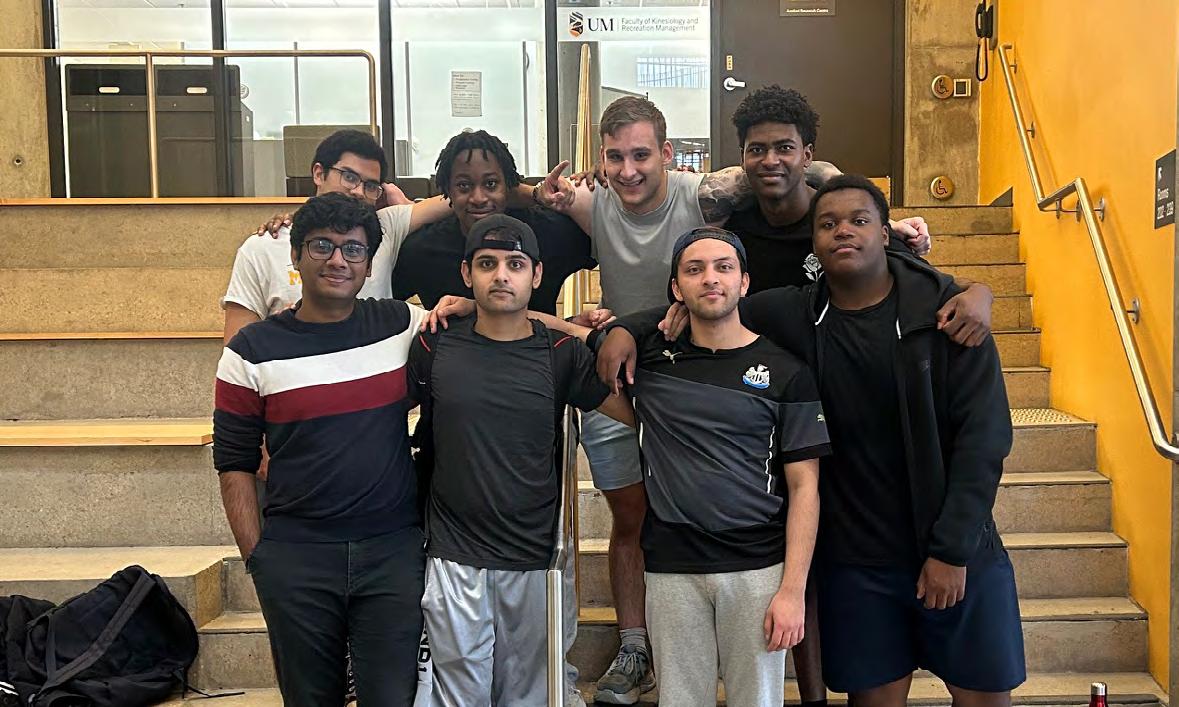
“Every picture […] or person that I see out there, they’re dancing on the sidelines, they’re high-fiving, and they’re meeting people they haven’t met before,” Angus remarked. “So I would definitely say they’re having a good time.”
Yousef Mahmoud, a master’s student at the U of M was one of the attendees of the event. “All of my friends were going and it seemed like a very fun experience,” he said. He added this was
his second time playing and that “the vibes were great.” To him, “everyone was amazing, happy, friendly, competitive,” Mahmoud said.
U of M Rec Clubs are student-led and student-focused. They are made up of students, staff and alumni. U of M Recreation Services offers intramural clubs for sports such as badminton, climbing, soccer, ultimate frisbee, wrestling and many more.

Bisons spike their way to victory over Brandon Bobcats
Bisons beat Bobcats 3-1 and 3-0
Israel Adeogo Abejoye, staff
The Bisons men’s volleyball team continued their winning streak from the previous weekend, taking both games against the Brandon Bobcats 3-1 on Friday, Nov. 14 and 3-0 on Saturday, Nov. 15.
In Friday’s matchup, the Bisons came out strong, winning the first set 28-26. The Bobcats took the second set 25-21, but the Bisons bounced back, taking the next two sets 26-24 and 25-23 to secure the 3-1 victory.
The Bisons’ Jonah Dueck got the first kill of the game, and the teams traded points for much of the first set. The Bisons refused to give up, scoring three consecutive points after the Bobcats took the lead 26-25 to take the set 28-26. In the second set, the Bobcats built a six-point lead, but the Bisons could not catch up. The Bisons came out determined in the third set, scoring three consecutive points from 8-11 to tie the game at 11-11.
They eventually won the set and then went on to win the fourth set, thanks to another three consecutive points from 22-23 to 25-23.
On Saturday, the Bisons dominated, sweeping the series with a 3-0 win. They took the first set 25-16, with Owen Weekes getting the first kill and Eric Ogaranko adding to the score. The Bisons built a five-point lead and never looked back. In the second set, the Bobcats took and maintained an early lead, but the Bisons fought back, tying up the game at 21-21 and eventually winning 25-23. The Bisons closed out the match, taking the third set 25-19.
The Bisons men’s volleyball team will take on the Thompson Rivers University Wolfpack in their next series in Kamloops, BC at 9:15 p.m. CT Friday, Nov. 28 and 6:45 p.m. CT Saturday, Nov. 29.
PHOTO BY MIKE THIESSEN / STAFF
PHOTO BY FAIYAZ CHOWDHURY / STAFF
Bisons struggle to find rhythm against Huskies
Bisons women’s basketball lose home opener 100-63 and 88-59
Faiyaz Chowdhury, staff
T
he Bisons women’s basketball team faced the Saskatchewan Huskies at the Investors Group Athletic Centre on Thursday, Nov. 6 and Friday, Nov. 7. They lost the first game 100-63 and the second 89-59.
In game one, the Huskies controlled the game from start to finish, with Téa DeMong and Gage Grassick both scoring 24 points, overpowering the herd’s defence.
In the first quarter, the herd opened the scoring with Ayva Khan, but the Huskies quickly responded and soon the Bisons were trailing behind 8-2. The Huskies came out firing on both ends and within the first five minutes they were 15-4, using a balanced attack and stifling defence to seize early control.
The herd struggled to find momentum, losing the ball at
multiple instances which led to transition chances for the Huskies. By the end of the first quarter, the Huskies led comfortably 32-14, setting up the tone.
The Huskies carried this momentum into the second quarter. In this quarter, the herd found some rhythm behind Khan with three points and Taylor Schepp with five points. Each found ways through the Huskies defence to get points, but both teams were evenly matched as they scored 16 points each. At the end, the Huskies led the game by 48-30.
the Huskies led comfortably 75–46. In the fourth quarter, even with the game in hand, the Huskies maintained their offensive intensity by scoring 25 points while the herd was able to score 17. The Huskies sealed a dominant win at 10063.
Standout players for the Bisons were Khan and Schepp.
went on offence, the Huskies set up a shaped zone defence around the three-point line. The Bisons moved the ball around, but the herd had difficulty breaking through the Huskies defence.
“I just thought we didn’t take enough shots, and then we gave [the Huskies] too many”
— Michele Sung, Bisons women’s basketball coach
After halftime, the Huskies showed up with no signs of slowing down as they scored 27 points in the third quarter alone. After three quarters,
Khan scored 12 points, while Schepp contributed 10. In this game when the Huskies went on the attack, they found gaps in the Bisons’ defence which allowed them to make crisp passes, letting the forward try to put it up for a layup or attempt a close-range shot. However, when the Bisons
Bisons women’s basketball coach Michele Sung reflected on game one. “There were some stretches in each quarter that we did a really good job competing, and then took our foot off the gas a little bit. Just getting out-rebounded by so much makes it really tough to keep pace, scoring-wise.”
On the team’s offence, she added, “I think our offensive output was actually okay. I think we were hoping to do a little bit [of a better] job giving them some defensive resistance. We shot the ball fairly
well. I just thought we didn’t take enough shots, and then we gave [the Huskies] too many.” Sung expressed, “I think we just have to execute a little better on rebounding.”
On Friday, the herd faced the Huskies again for game two. The herd was able to get the lead at the end of the first quarter by a point 16-15. After that, the Huskies took control, outscoring the herd 33–16 in the second quarter, 21–20 in the third and 20–7 in the fourth. In the end, the Huskies’ offensive intensity proved too much with Logan Reider putting up 26 points, contributing to securing a convincing 89–59 victory.
The Bisons women’s basketball team will face the Calgary Dinos on Friday, Nov. 28 at 6 p.m. CT and Saturday, Nov. 29 at 4 p.m. CT at the Investors Group Athletic Centre.
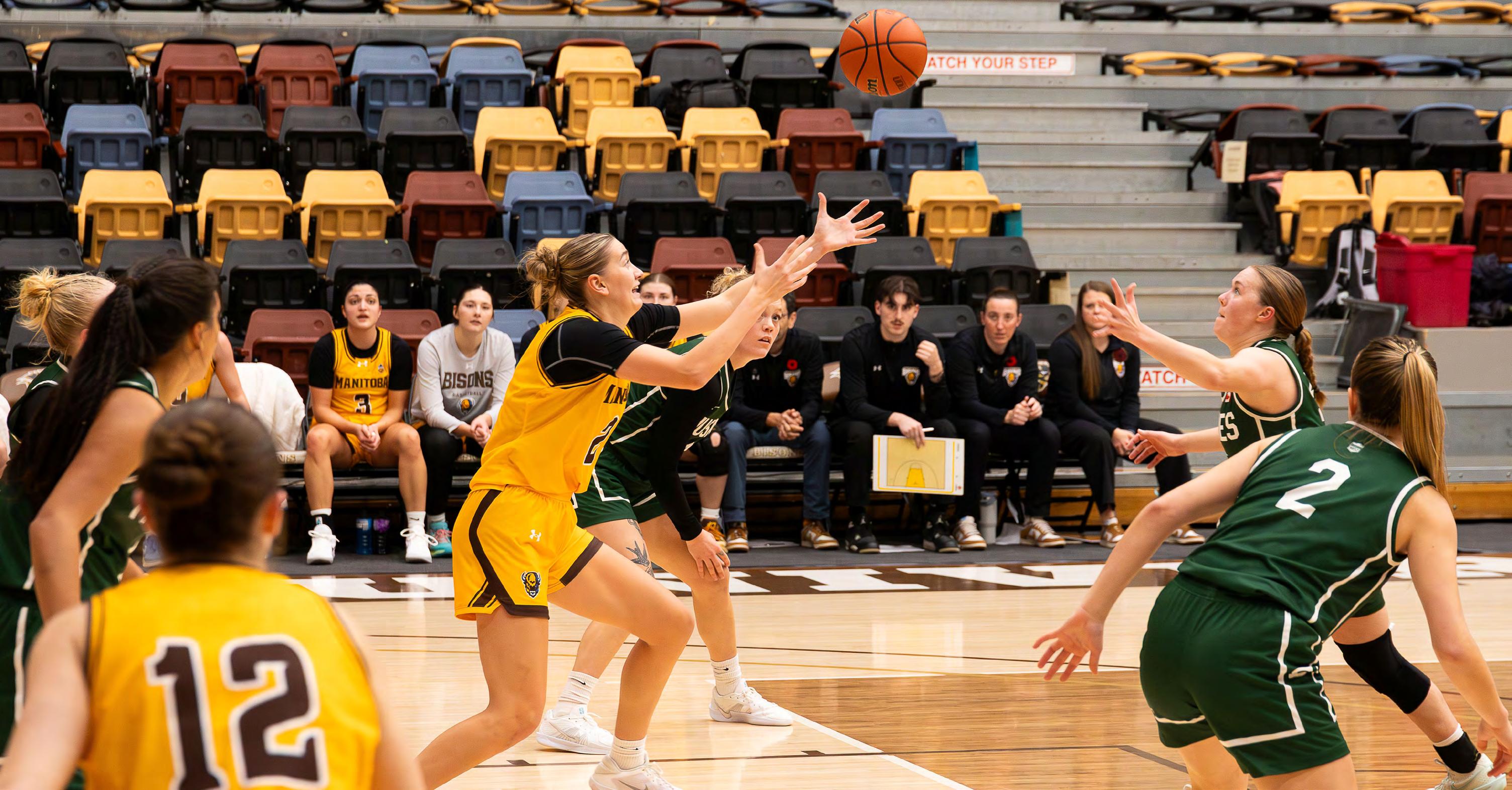

PHOTO BY EBUNOLUWA AKINBO/ STAFF
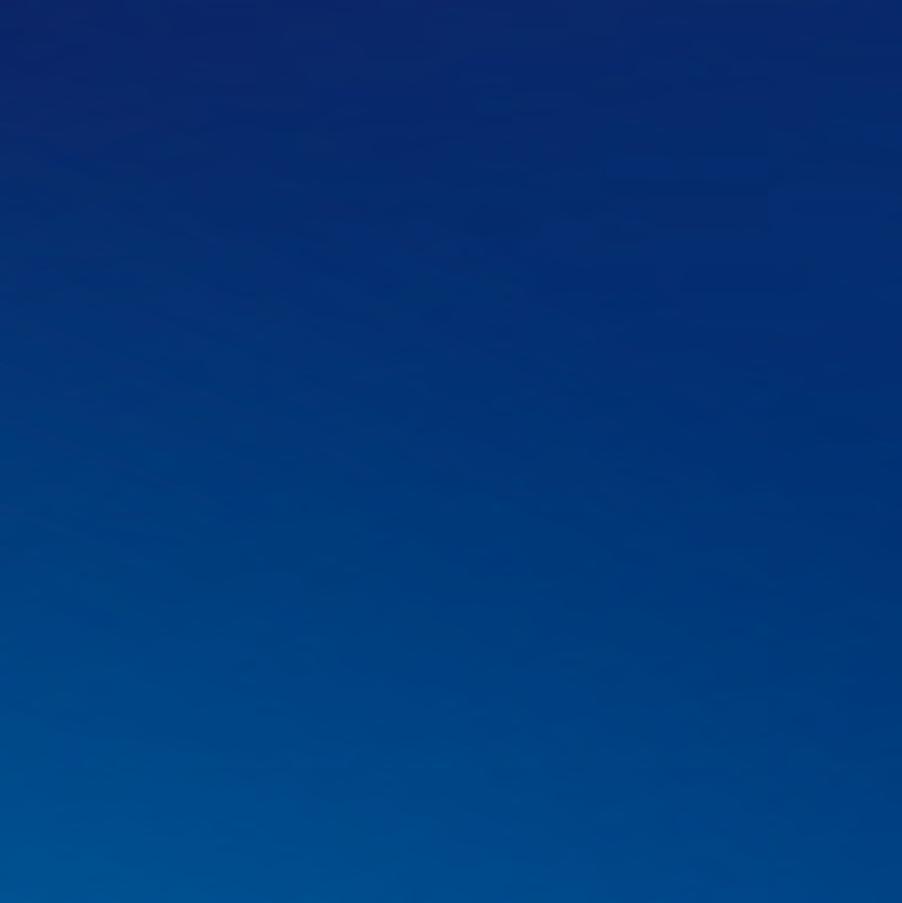



No Biggie



You drink it. You bin it.
Recycling empty beverage containers is no big deal. Unlike your midterms.






















